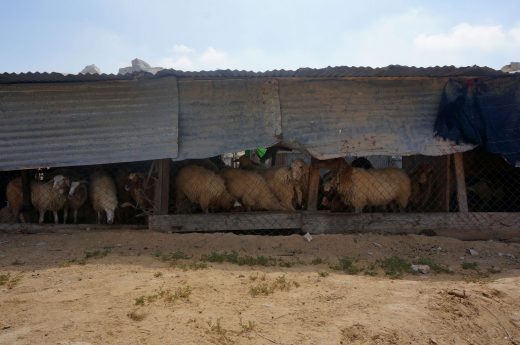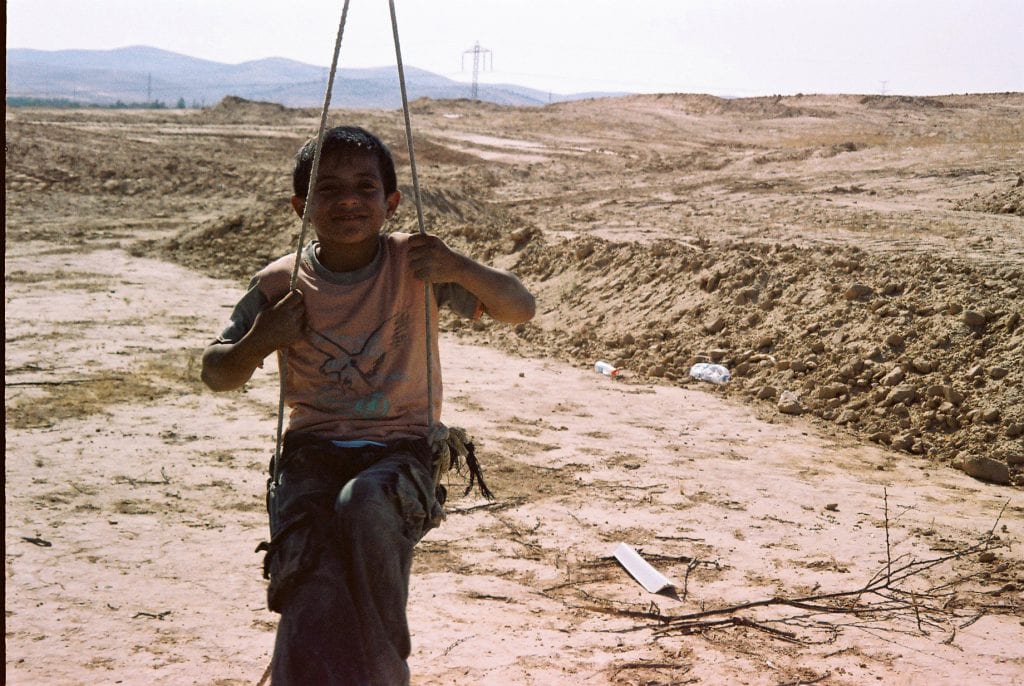
Ḥakmah ʾAbū Mdīġim, al-ʿArāgīb
I joined the photography project in 2011 after the demolitions in our village started, in order to document the violations of our rights and the State’s treatment towards the Bedouins in the Negev. I continue photographing and documenting, also with my mobile phone. I like to photograph what happens around me as well as document the assaults of the authorities on the graveyard where we presently live after the demolition of our village.
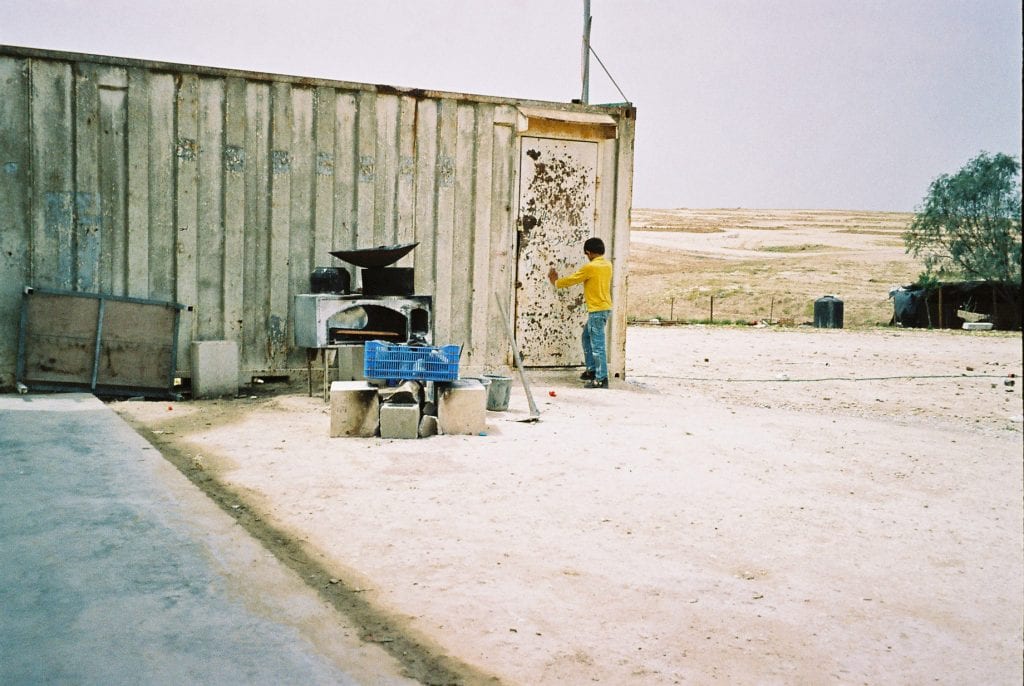
Ṣabāḥ ʾAbū Mdīġim, al-ʿArāgīb
I started photographing as part of the project, six years ago. I joined the project in order to document my daily life but to show the robbery of lands and the injustice of the State towards us. The photography project gives me strength and self confidence to prove our existence here. I don’t ask for rights since rights are natural and basic for everyone, including us, and should be obvious. The State of Israel showed us that it is able to do things we didn’t expect to deal with. We live in a village without basic infrastructure such as water and electricity. We live in conditions like our grandparents’ generation. Life is tough in this country which claims to be a democratic state – I don’t see democracy here. Nevertheless, I aspire to live free and safe and hope my children will have a better life, without police raids, demolitions and constant harms.
al-ʿArāgīb
al-ʿArāgīb is an unrecognized village west of Route 40, between Lehavim and Goral Junctions. Until the State began repeated demolitions in the village in 2010, around 400 people lived inal-ʿArāgīb. Today, only a few dozen residents remain, in the vicinity of the village cemetery, continuing to wage a struggle against its destruction. Within the area of the village there are ancient cisterns, a cemetery founded in 1914, old huts and several dams.
The village of al-ʿArāgīb was established during the Ottoman period, on land that the village’s inhabitants purchased during the 20th century. In 1953, the military regime ordered the villagers to evacuate temporarily for six months, claiming that the State required the land for army training sessions. After six months, in which the inhabitants lived near their lands and in other parts of the Negev/Naqab, the authorities sought to delay their return, eventually informing the inhabitants that they were forbidden to return to the village at all. According to the villagers, they have never left al-ʿArāgīb and kept on cultivating their fields, grazing their herds in the village’s area and burying their dead in the family’s cemetery. During the 1970s the village’s residents submitted multiple land claims to the settlement officer.
In 1997, Jewish National Fund (JNF) workers began to work in the lands of al-ʿArāgīb. The residents complained about the work on a land for which they had sued for ownership, and the JNF left. From the year 2000, the villagers began to cultivate the lands and sow the fields. In response, the State began to spray the fields and plough them over, in order to destroy the crops. In the beginning of the 2000s, members of the Abu-Madigem family – one of the families that had lived in the village until 1953 – returned to live on their lands in al-ʿArāgīb.
al-ʿArāgīb does not receive any health and education services and residents must travel to the city of Rahaṭ, six kilometers away. The village is not connected to the national electricity grid, and the residents use generators and solar panels to supply their own electricity. Since the village is also not connected to the water supply, the inhabitants are forced to transport water in containers for a distance of 18 km – an expensive process which also negatively impacts the water quality.
The main threat on the unrecognized village of al-ʿArāgīb is the repeated demolitions, the frequent arrests and bullying by enforcement authorities against the villagers. On July 27, 2010, the entire village was demolished by the State, and since then the security forces have returned more than 165 times to demolish it again. On June 12, 2014, most of the buildings were demolished in the village’s cemetery complex, where residents have been living for the past few years.
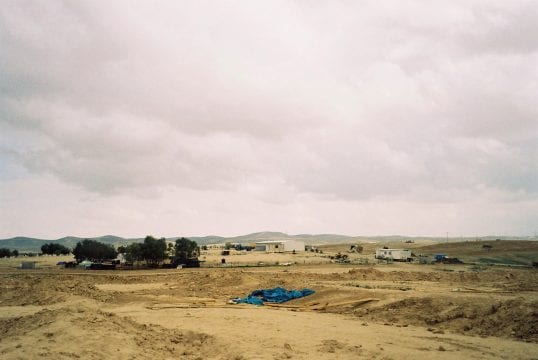
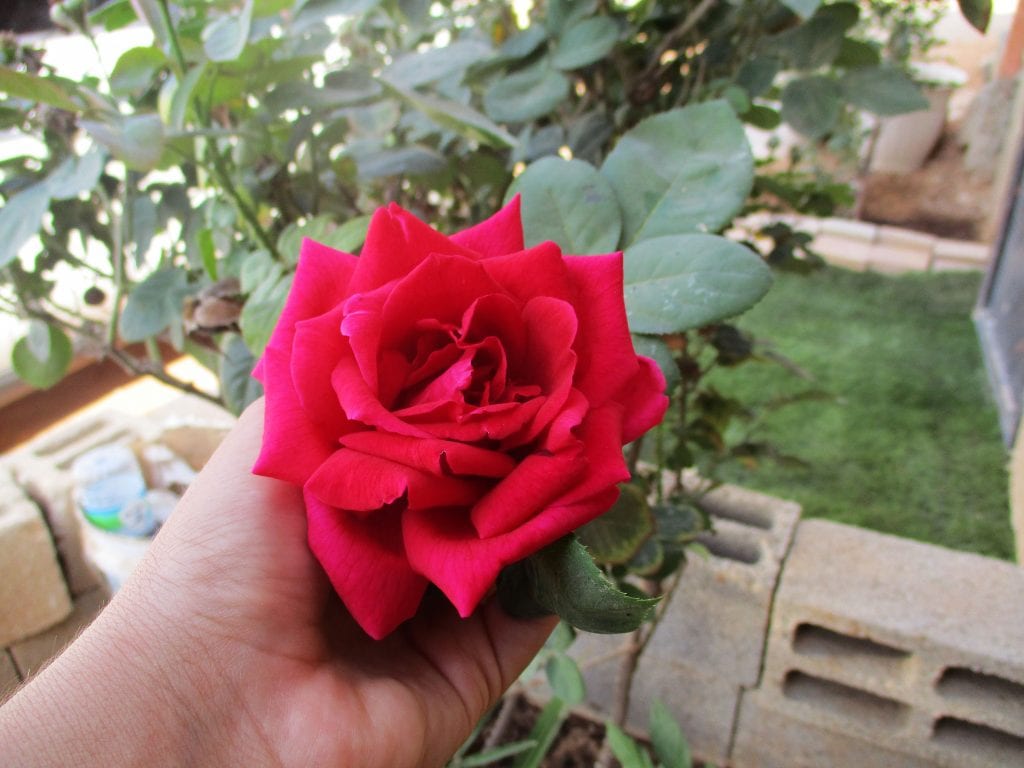
ʾAmal ʾAbū Qwīdir, az-Zarnūg
My name is Amal Abu Qwidir and I’m from the unrecognized village of A-Zarnoug. I completed high school two years ago and would love to continue to law studies, a field that I find very interesting. I love playing the piano and listening to music. Recently I joined the photography project because I love taking photos. I feel very connected to my village, to this place, and I really hope that we’ll be able to stay here and not be forcefully moved.
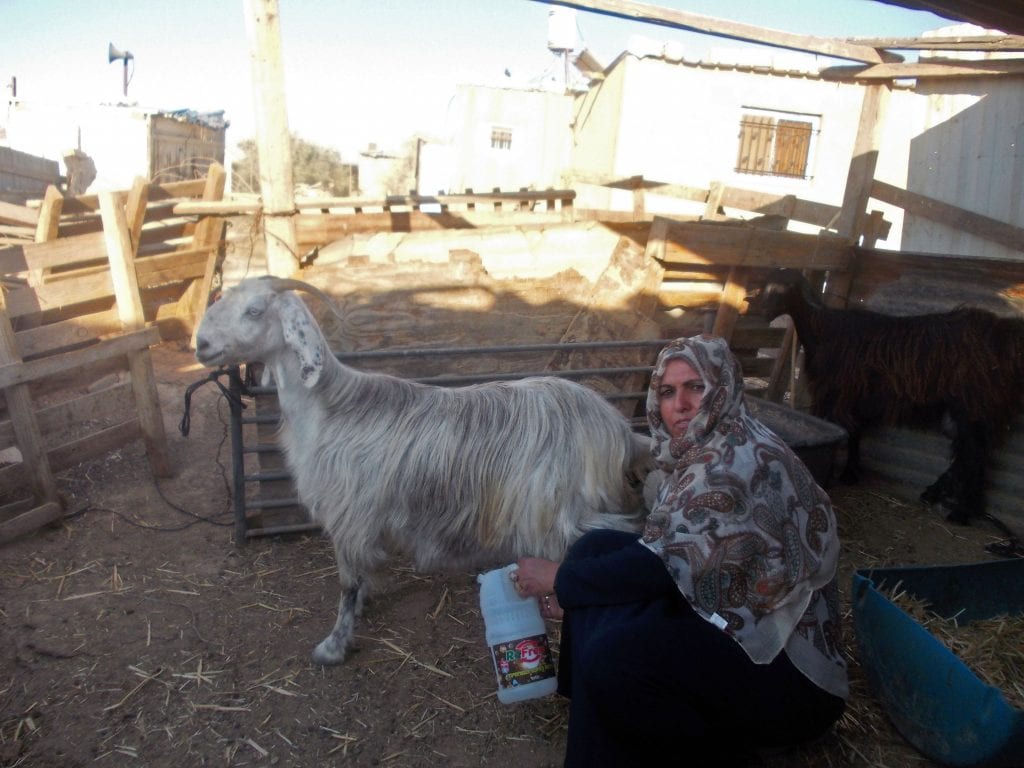
Ḥisin ʾAbū Qwīdir, az-Zarnūg
I’m a mother of ten children. I was born in the village of az-Zarnūg. My parents and grandparents were also born here in the village. I like to take pictures of everything, and usually document the environment in which we live: nature, the sheep, and also the police when they come to demolish houses. The worst thing I experienced was when they demolished my home five years ago. It was very difficult to face them and protect my house while taking photos at the same time. Today I have much more strength and courage to take pictures than in the past, since I’m convinced of what I am doing. I dream that our village be recognized, and that I will have a proper and permanent house which the police will not come to demolish.
az-Zarnūg
The unrecognized village of az-Zarnūg predates the establishment of the State of Israel and houses roughly 5,000 people. The name of the village means “stream” or “brook” in Arabic, and the village is named for the brook that runs nearby.
Services and infrastructure Since 2003 Medical services are provided at a clinic in the village that is open for limited hours. The clinic also serves the residents of neighboring villages and is constantly overcrowded. No pharmacy is available for lack of appropriate means of refrigeration.
The ‘Neve Midbar’ (oasis) school in the village was opened in 2000 and it combines an elementary school with junior high school. It serves about 900 students from az-Zarnūg and the neighboring villages. In 2018, the Village Committee opened negotiations with the Ministry of Education to open a high-school in the village. However, in 2019, the right-wing NGO “Regavim” petitioned the Court against the opening of the high school. In August 2019, a District Court Judge in Be’er Sheva rejected Regavim’s request to prevent the school from opening. In September 2019, the first high-school opened in the village, but in temporary constructions and with only a temporary permit.
The village is not connected to the electricity grid and power is supplied mostly through solar panels, purchased by the villagers. Water is drawn from a single designated spot on the main water-pipe located some 1.5 Km away from the village via plastic pipes laid at the expense of the consumers.
Threats As in most unrecognized villages, house demolitions are frequent. Most of the area of az-Zarnūg is designated by the regional plans as a rural/agricultural area making recognition possible. A researcher appointed by the National Council for Planning and Construction in 2010 made a recommendation to this effect.
However, the situation in az-Zarnūg is unique in that there exists a claim for private ownership of part of the land of the village. In January 2010 the “Regavim” Association submitted a request to the Minister of the Interior to demolish all the buildings in the village, claiming that they were built on private land.
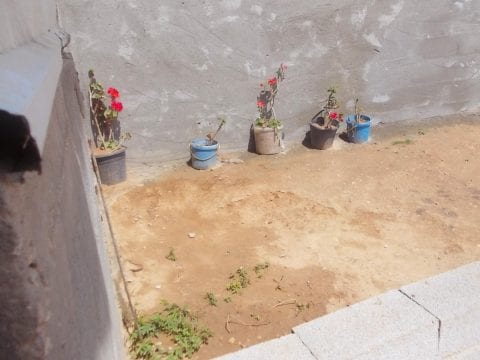
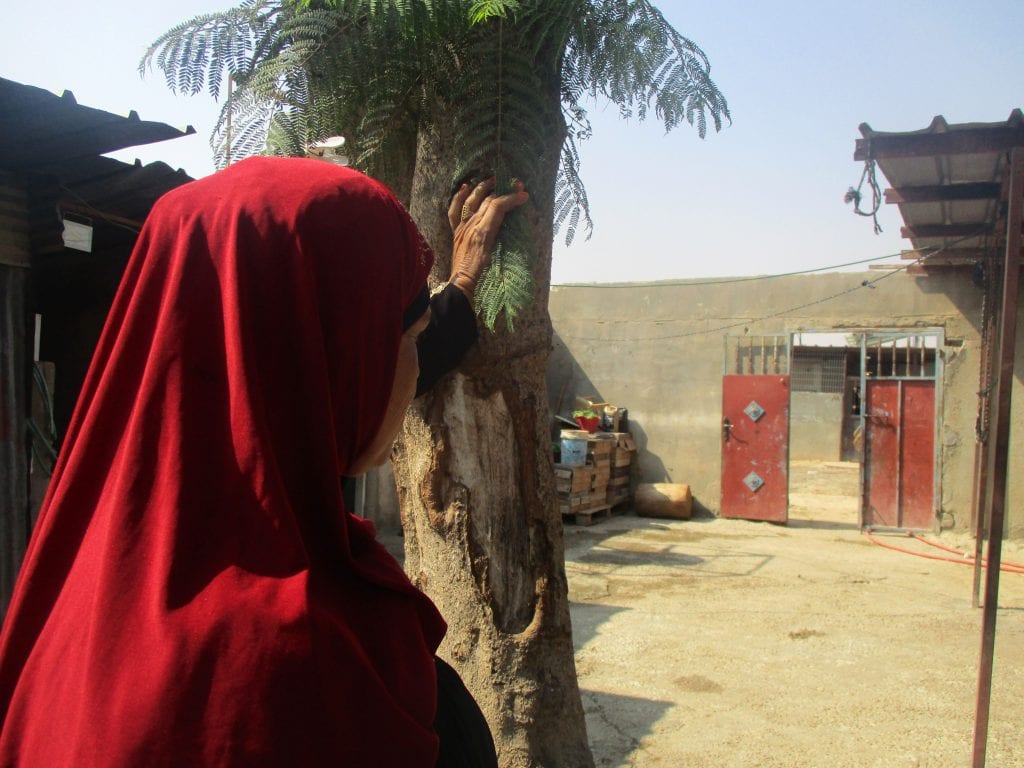
ʾAmal ʾAbū Jūdeh, az-Zaʿarūrah
My name is Amal Abu Guda. I was born in the village of Alzaarura and I am a mother to 11 children. I joined the photography project 4 years ago. At the beginning I didn’t take a camera because I didn’t understand the importance of photography and I was somewhat anxious to take pictures. I was more interested in the debates and discussions. A year ago I took a camera and felt it does have a meaning for me. Filled with energy for photography I started to take pictures of everything that interests me. As a mother who lives in a village that has nothing, my dream for my children is that they live in safety close to me and that we will not be dispersed by the State and that we will be granted all rights as citizens.
Portrait photo by Hanan Abu Kaf
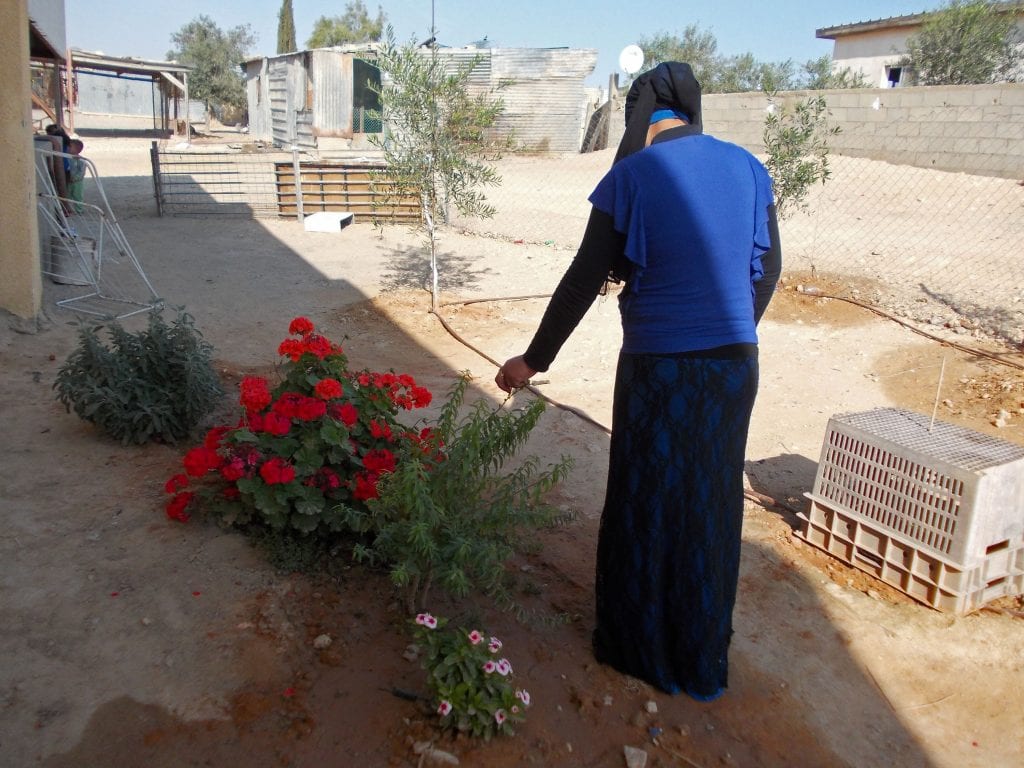
A photographer from az-Zaʿarūrah
I am a mother of thirteen children – eight boys and five girls. I have been in the project for four years now. I photograph our daily life, what we see and go through. Photography made me confident that I had done something, created something. It’s also difficult to take pictures of Israel Land Authority inspectors and of the forces that frequently come to demolish houses in the village. I know that photographing the police is legal but most of us do not know it, and when I take pictures, they will probably think of other things that are not what I do. I dream that we will live a natural life without fear, like everyone else. I dream that we will have a normal life and that basic services will be provided to us. The camera helped me to document my life and the difficulties I am going through, maybe someone will see the photos and reach out to help me.

Ṣubḥiyyah ʾAbū Jūdeh, az-Zaʿarūrah
I am a mother of nine children, every day I go to work and when I return from work I continue to work at my home to raise my children. I also have two sons who study and I support them. I like to photograph everything beautiful: nature, trees and people in the village. My most difficult event was when they came to demolish my son’s house, I lost my consciousness for almost three hours because of the incident. We saved everything for building this house for him, and in the end they can easily come and destroy it. The situation is very bad in the village, it is not recognized, and there is no proper water network and no electricity. The tin house is very cold in the winter, and even if you want to buy wood, the price is very high. I dream that my sons and I will live happily in a quiet village without problems. I also wish to stay healthy and do the pilgrimage to the house of Allah.
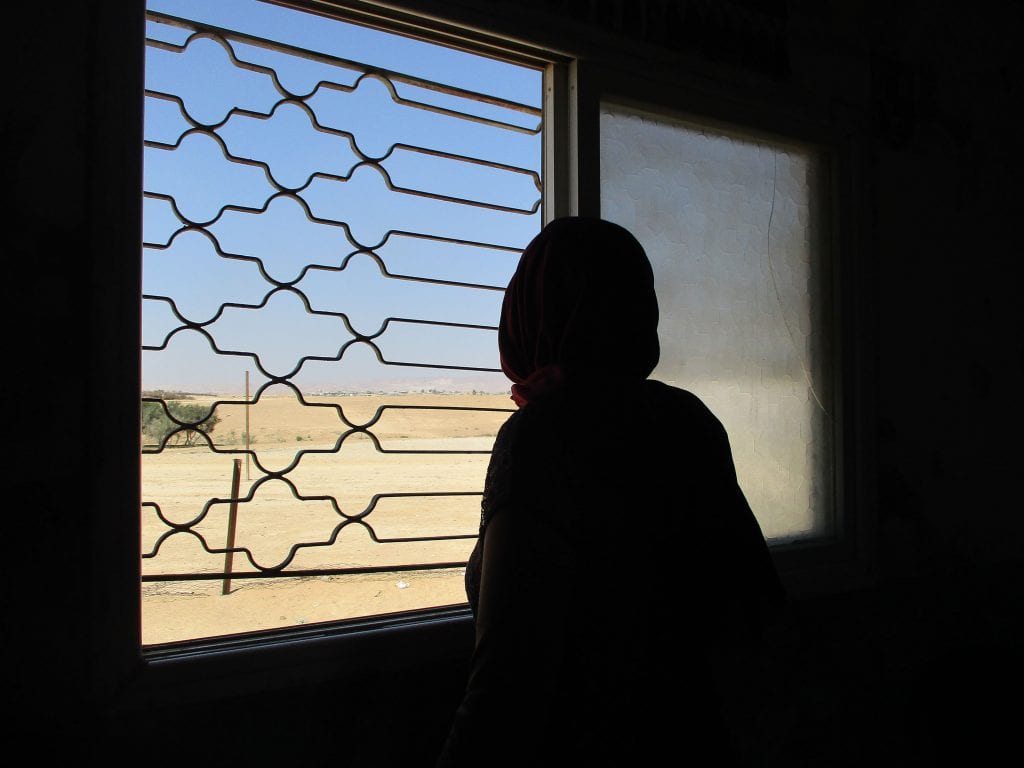
Waḍḥah ʾAbū Jūdeh, az-Zaʿarūrah
My name is Wadha Abu Guda. I was born and grew up in the village az-Zaʿarūrah. I am a mother to two children, a boy and a girl. I have been participating in the photography project – “photographing life in the Negev” – for the last five years. The participation in the project gave me knowledge and awareness. I live in an unrecognized village, with no rights, no equality and no basic services. Through the camera I document the violations of rights in the village, the daily life and the difficulties and hardships me and my children experience. I see my photography as part of the struggle for our rights and a way to show the world the difficult situation in which we live in Israel.
Portrait photo by Sabrin Abu Kaf
az-Zaʿarūrah
az-Zaʿarūrah is an unrecognized Bedouin village located east of the township of Ksīfih, on Route 80. There are around 2,600 people living in the village. az-Zaʿarūrah is an historical village that was established prior to 1948, and is named after a medicinal herb. There are ancient water-wells and dams in the village.
Services and Infrastructure There are no health services in the village, and residents must travel for about 20 minutes (15 km) to the township of Ksīfih in order to receive medical attention. The village has no educational facilities such as kindergartens and schools, and students are forced to travel each day to the township of Ksīfih or the nearby village of al-Furʿah for school. There are no paved roads in the village and the nearby wadi has no bridge, so that on rainy days when the river overflows, the entrance and exit from the village is completely blocked. Water and electricity are not provided to the villagers by the authorities. The residents receive water through 10 ‘Mekorot’ connection points on the main road, from which they draw pipes at their expense, as well as absorb the cost of repairs. Residents also supply their own power, with some using solar panels at a very high cost; some use electricity from Ksīfih; and there are also those who have generators.
Threats az-Zaʿarūrah is an unrecognized village and thus is under the constant threat of demolitions and evictions. Some of the villagers’ homes have demolition orders and each several months there are demolitions in the village. According to the Be’er Sheva Metropolitan Plan, the area on which the village is situated is defined as combined agricultural and rural landscape and, therefore, the researcher appointed to examine objections to the Plan had recommended that the village be recognized.
As of 2004, Rotem-Ampert company (a subsidiary of ‘Chemicals for Israel’) seeks to establish an open phosphate mine in the area. A petition filed by the Arad municipality, Adalah, residents of al-Furʿah village and other organizations; demanded from the National Planning and Building Committee to cancel the National Council’s decision that phosphate mining would be allowed in the area, on the grounds that this activity would endanger the health of the residents, Jews and Bedouins alike. During a Supreme Court hearing on February 27, 2019, the court issued a probation order to the State that bears the responsibility of convincing the court why it should not intervene in the approval of the plan. The court eventually ordered that the plan returned to the National Planning and Building Committee, as it did not provide sufficient examination of the potential health effects of the plan on the residents in the area.
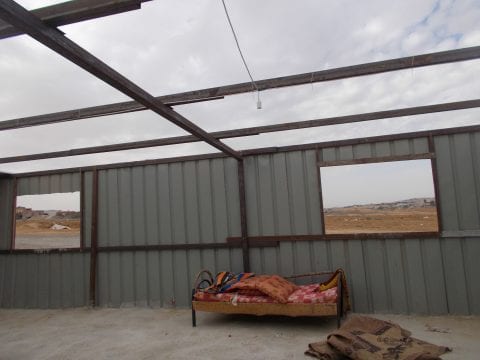
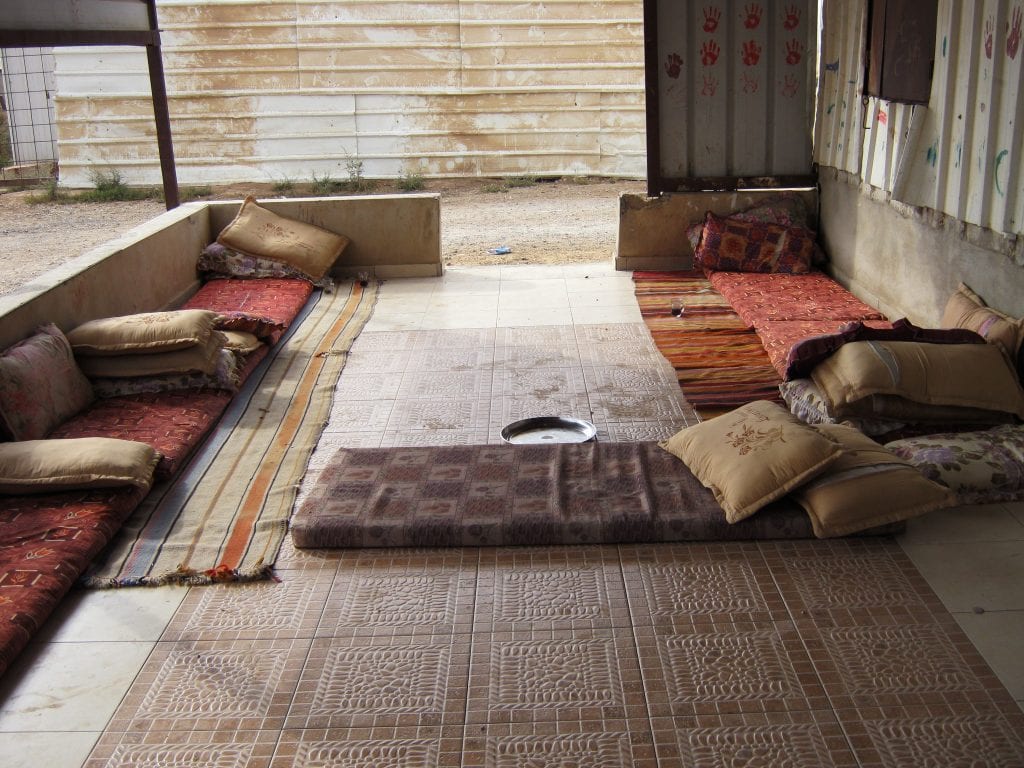
ʾAmal al-ʿAmūr, as-Sirrah
I was first taught photography in 8th grade. I was surprised when they published a picture that I took of a Bedouin cup of coffee and a demolished home in the background, at the first photography exhibition to a global audience, I thought that the photo was beautiful but had no idea that a vast audience would admire it. Photography is interesting and full of experiences. I photograph the things that I want to tell but struggle to say. The photo tells the story I wish to share. Photography has a power in the story of the unrecognized villages in the Naqab. Our power is in our photography and documentation. Even in the nearby township of Hura there are those who haven’t heard of our village. Some people might think that we are just people without basic infrastructure, without anything. But we have visitors, tourists, family fun and warmth, and the photos show these parts too
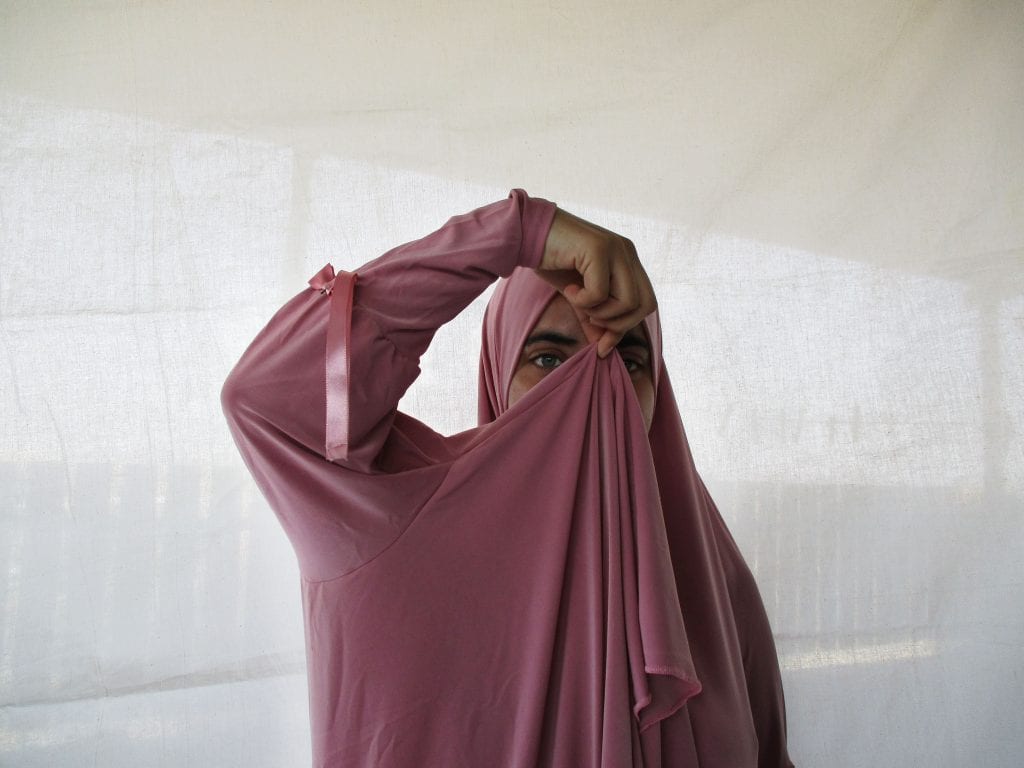
ʾAsmāʾ al-ʿAmūr, as-Sirrah
Who doesn’t like to take photos? That is why I participate in the project, to develop more. I love to photograph myself, nature and other things.
Portrait photo by Hudah al-ʿAmūr
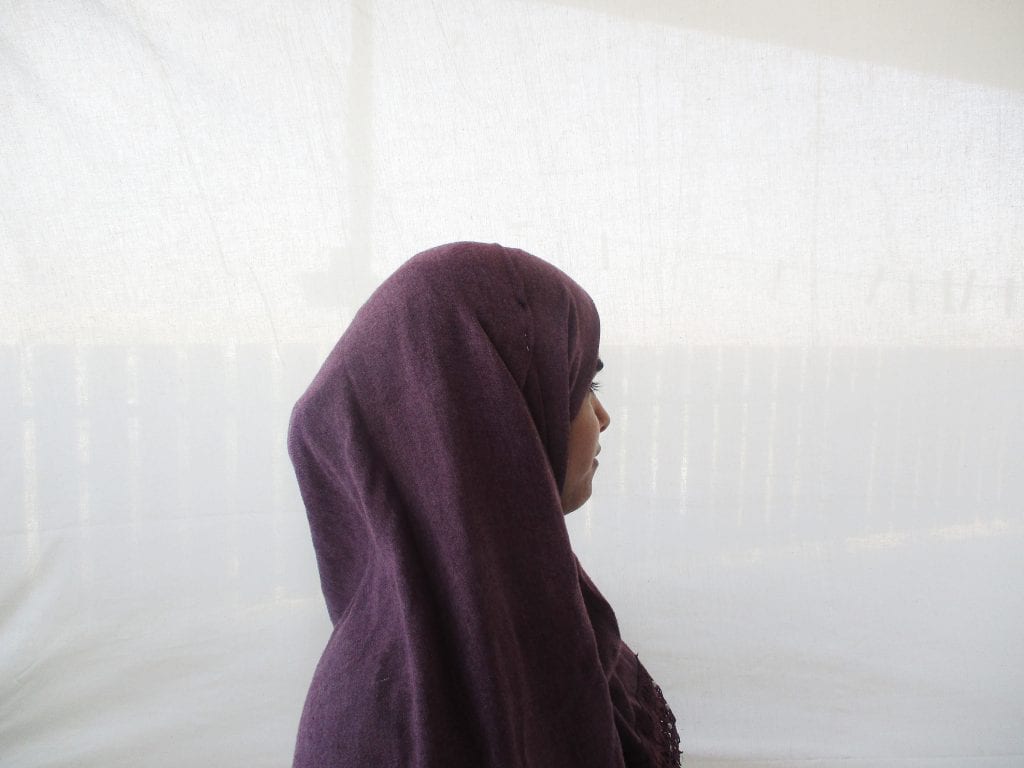
Hudah al-ʿAmūr, as-Sirrah
I participate in the photography workshop because I love to photograph and I am always taking pictures. It’s a way of conveying our true state of being to the world and enabling others to get to know our village. I love taking pictures of the sunset and nature.
Portrait photo by ʾAsmāʾ al-ʿAmūr
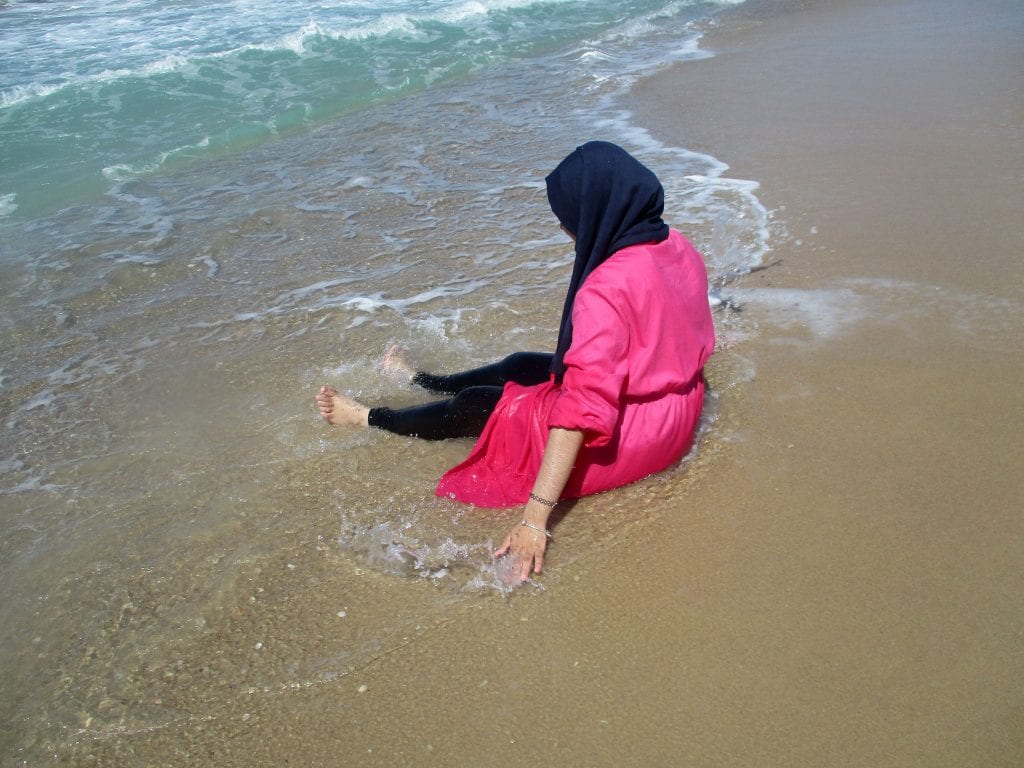
Maryam al-ʿAmūr, as-Sirrah
I participate in the photography project because I think that if I learn to shoot I will be able to take pictures of all the beautiful places in the world. I like to photograph things with good strong light that are beautiful at the same time.
Portrait photo by Tansīm al-ʿAmūr
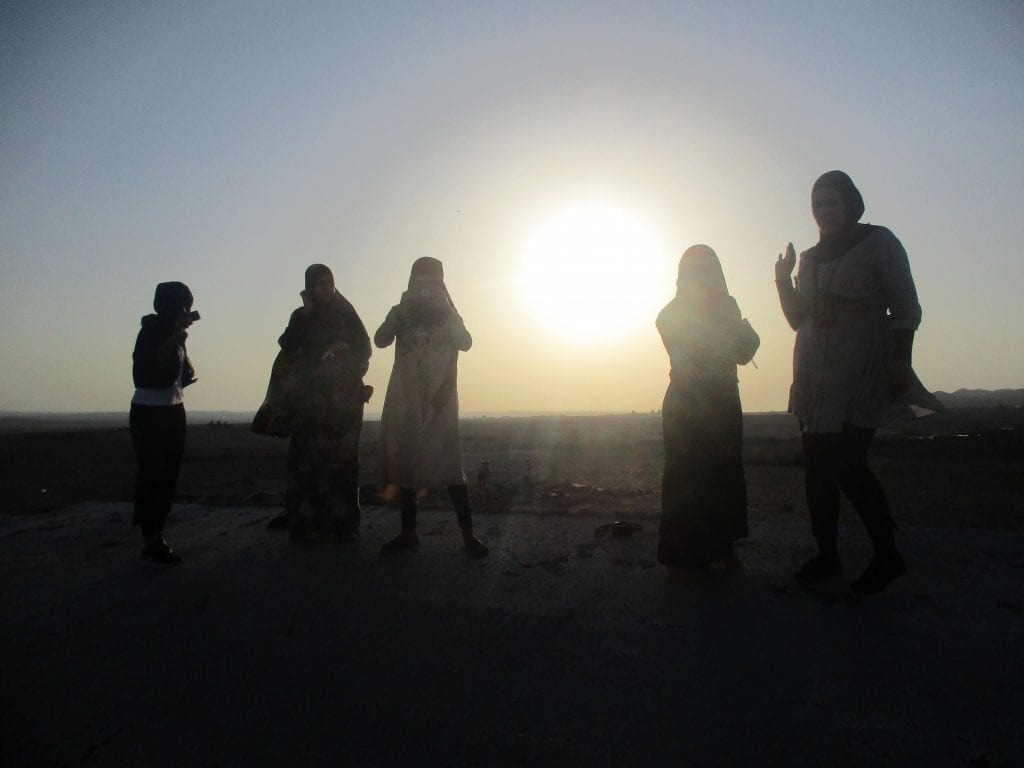
Sujūd al-ʿAmūr, as-Sirrah
Photography is very enjoyable and gives me positive energy. I love my village and everything that is green such as the trees and flowers, and especially the sunset in my village. My dream is to become a pharmacist and learn the Hebrew language.
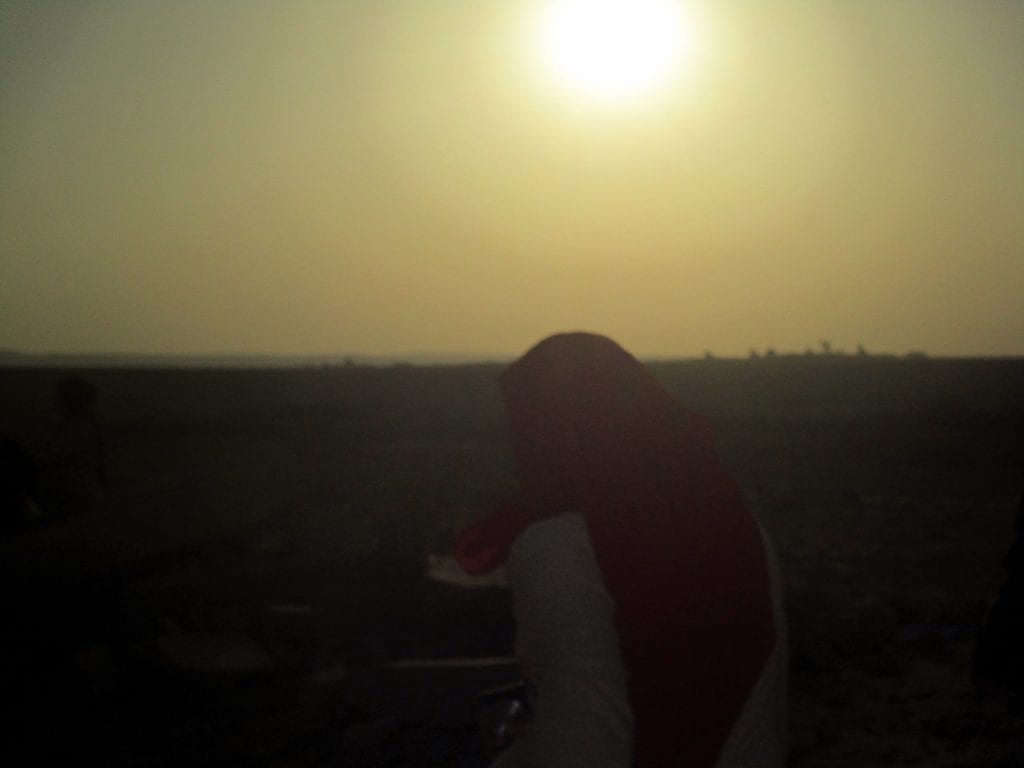
Tasnīm al-ʿAmūr, as-Sirrah
I participate in the photography project because I love to photograph and also to fight for the rights of my village. The things I love most in my village are: the sunset, the olive trees and the animals. My dream is to be a painter.
Portrait photo by Maryam al-ʿAmūr
as-Sirrah
The unrecognized village of as-Sirrah has a population of about 500 residents. as-Sirrah dates to the Ottoman period. Remains in the village such as stone buildings (Baika), trees, caves and water cisterns are evidence to the long history of the village. The lands of the village were purchased in the 1920’s and the families hold the original purchase documents. In the 1970’s the residents filed ownership claims for these lands but they were never clarified.
Services and Infrastructure No services are provided to the village by the State of Israel. Water is supplied at the expense of the residents through connection to the main pipe which runs in the outskirts of the village. There is no connection to the electricity grid and all the power is supplied by private solar panels. The small mosque in as-Sirrah was built by the residents, as well as the two pre-nursery homes that are operated and maintained by the people of as-Sirrah and in cooperation with social services. There is no school, kindergarten or health clinic in the village. For all these services the residents have to travel 12km distance, to Ksīfih.
Threats The industrial area “Kidmat Negev” is planned on the lands of as-Sirrah. The state claims that the lands were expropriated in the 80s when the close by Nevatim army air base was built but the residents of as-Sirrah were not informed about the expropriation.
In 2006 demolition orders were handed to all residents. The court cancelled these orders but the state appealed to the district court against this ruling. In 2014, the district court denied the state’s appeal and cancelled the demolition orders.
Local initiatives In recent years there has been a hosting site in the village, “Amazing Bedouin hospitality”, which provides accommodation in various rooms, including a Bedouin tent, Meals and tours of the village and neighboring villages to individuals and groups.
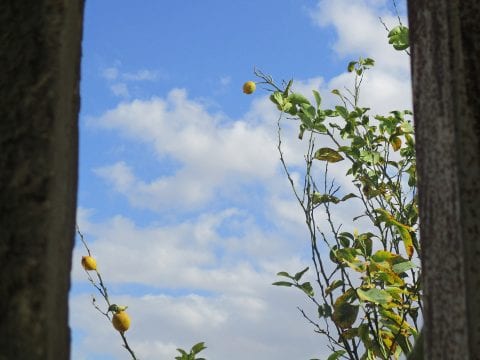
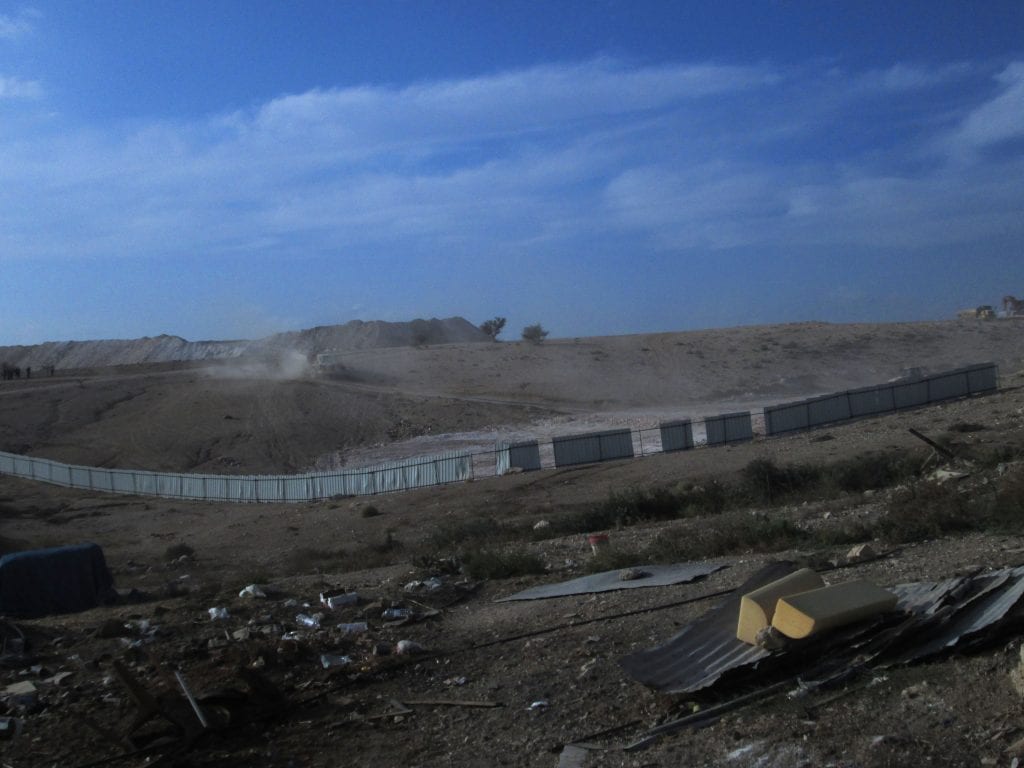
ʿĀyšah ʾAbū al-Qiʿān, Umm al-Ḥīrān
My name is ʿĀishah, and I am a mother of three children. I live in the village of Umm al-Ḥīrān and I hope we can live safely and freely in our village. The most difficult thing that happened to me was when they killed Yaʿqub and destroyed the houses. The police raided the village at 5:30 in the morning, it was dark and hard to see what was happening. Most of the photos I took then, are blurry. In spite of the darkness, I was taking pictures, unaware that something would happen. It is very difficult to take photographs when I am in trouble myself. If my house was being demolished, it would have been impossible for me to take the camera and document it. My dream is for us to live in our house quietly and feel secure that no one is coming to intimidate us. Until this moment, my children remember what happened to Yaʿqub and they are very afraid when something occurs in the village.
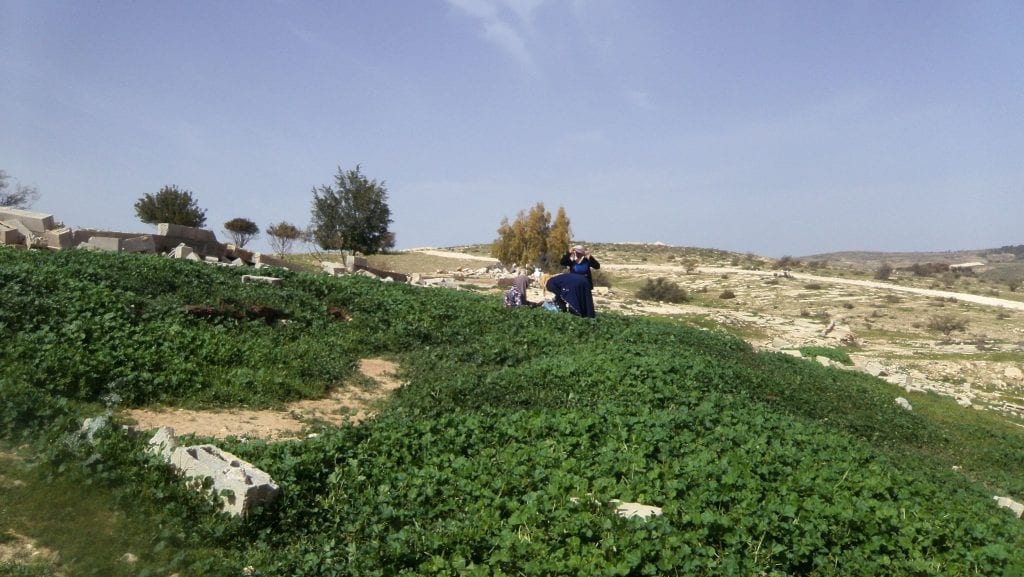
Riḍā, Umm al-Ḥīrān
I was born in the village of Umm al-Ḥīrān and all my children were born in this village. The most difficult thing I went through and which I was not able to document was the killing of Yaakub and the many houses that were demolished that day. After that came the decision to evict us promptly from our village to the township Hura. Photography enables me to show the world the things people cannot see, the hardships we go through and the injustice we constantly face.
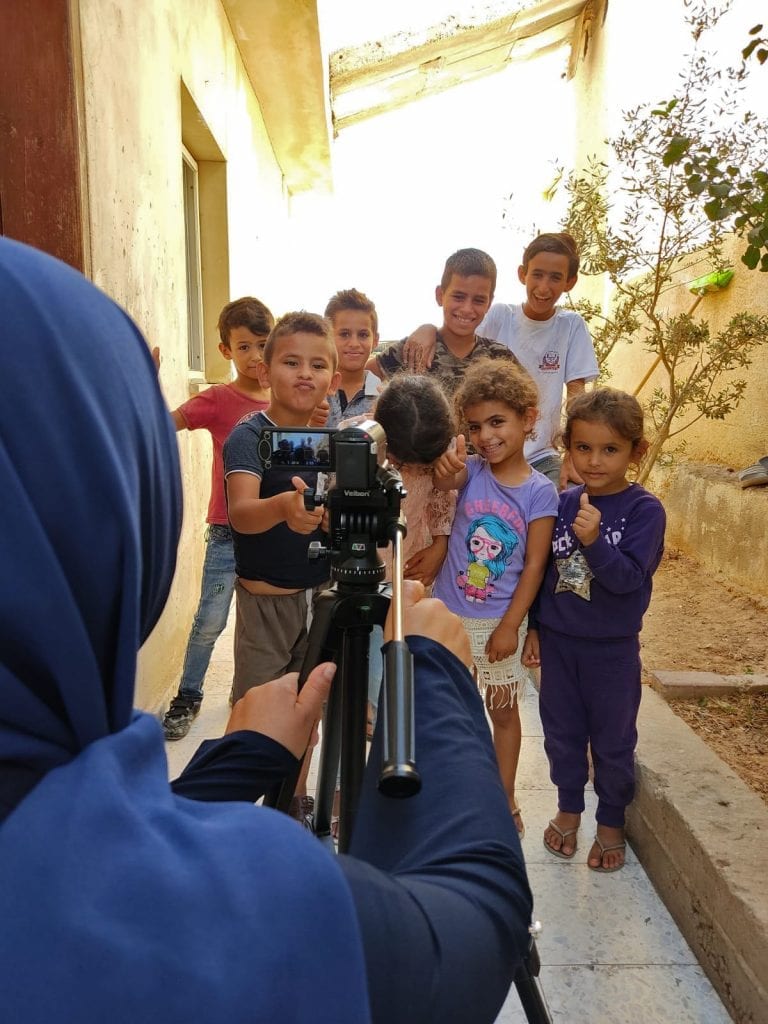
Rimāl, Umm al-Ḥīrān
I am a housewife and I have five children. I was born and raised here, in Umm al-Ḥīrān. I love taking pictures because photos will remain as memories. That is why I photograph almost everything. When I’m cooking in my kitchen- I take pictures, when I work at home and do the cleaning and washing- I’m also taking pictures. I just document everything I do or like. I feel constant fear of the future because it is uncertain and I have no idea what will happen to us once we are evacuated from our village. They gave the village’s families plots, but there is a great injustice- my family did not receive land that suits her. Our plot is very small and insufficient. We haven’t started working on our home, although they gave us a very short period of time to build our new house in the township of Ḥūrah. Everyday my fear grows. I fear for my home and for my children. I fear of losing all the memories I have of my house and my village. I have memories from every part of my house. I have valuable belongings that I have kept over the years and I am afraid to lose them when they come to destroy it without notice.
Portrait photo by Nūra from Rakhamah
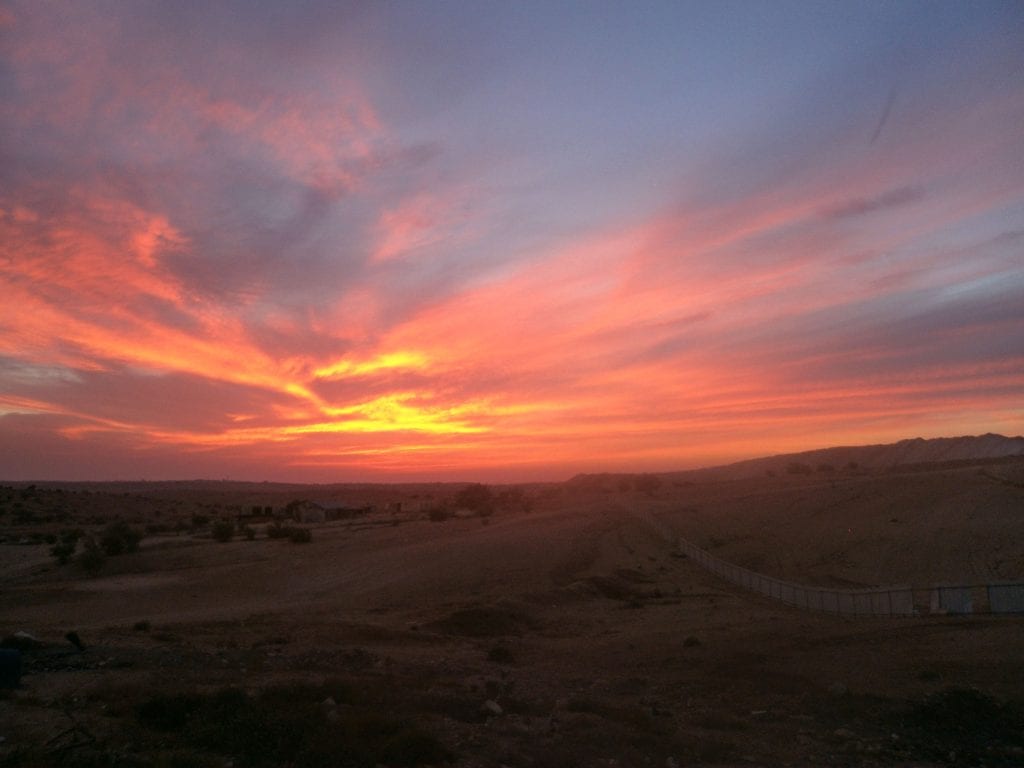
Ruqayyah, Umm al-Ḥīrān
I am a mother of five children. I am married and have been living in Umm al-Ḥīrān for eight years. What I like to photograph the most is sunset and nature. I like to take pictures of things that happen to me so that I can look at them anytime. I wasn’t present at the worst event, the day they killed Yaʿqub, may he rest in peace. I wish I was in the village at that time. Until this day, I cannot understand how and why this happened. It’s very hard to photograph the destruction and ruins of demolished homes. I dream of a life that is stable, stability at home and mental stability for the children. One’s mind has to be calm and stable. We wish to live in a home and be calm. I wish to fix things in my home without having to think it will be demolished.
Umm al-Ḥīrān
The village of Umm al-Ḥīrān is a Bedouin unrecognized village situated 8 km north east the town of Ḥūrah, with about 370 inhabitants. In 1952 the lands of the Abu al-Qian tribe, located in the north-western part of the Negev/Naqab, were seized for use by the Israeli army, and the inhabitants were moved to the Lahav forest, where they remained until 1956. The village was then displaced once more and the area was designated for the use of the State and the village was moved to its present location. It is named after the Ḥīrān Valley that passes near the village, as well as the adjacent Ḥīrān mountain. The area is filled with caves, which over the years have been dug in by the villagers for the use of homes and as storage.
Services and Infrastructure The village is not connected to the national electricity or water grids, and its residents use solar panels that are very expensive to receive electricity. The village of Umm al-Ḥīrān has no education or health services. In order to receive these services, the residents are required to reach the town of Ḥūrah, 8 kilometers from the village, which is a 10-minute drive away. The kindergarten and school children must walk to the main road in order to receive their ride to school.
Threats In 2003, the National Council for Planning and Building approved the founding of the Jewish settlement Hiran in place of the village of Umm al-Ḥīrān. In practice, the plan was to uproot the people of Umm al-Ḥīrān for the third time. The same year, residents of the village received eviction orders and by 2004, villagers began to receive demolition orders for their homes. In May 2015, after a long legal battle, the Supreme Court denied the Umm al-Ḥīrān residents’ appeal to cancel eviction orders standing against them. According to this decision, the State of Israel is allowed to move the residents to Ḥūrah against their will and destroy the village.
In August 2015, work to establish Hiran had started near the houses of Umm al-Ḥīrān’s Bedouin residents. By 2017, the State began to actively transfer people from the village to the town of Ḥūrah.
The residents of Umm al-Ḥīrān have ownership claims to land they had possessed in the northern Negev, from where they were removed during the 1950’s.
On April 10, 2018, after lengthy negotiations that were interrupted and agreements that were constantly changed, the State of Israel decided to transfer the people of the village by September 2018 to neighborhood number 12 in Ḥūrah. Since then, the evacuation has been delayed several times. According to a report published in the major daily Maariv newspaper by reporter Kalman Libeskind in April 2018 State officials signed one framework agreement and one detailed agreement with the residents of Umm al- Ḥīrān, in which the residents pledged to evacuate their homes and move to the recognized Bedouin township of Ḥūrah. The State pledged to grant every couple and every single person over the age of 24 a plot for construction and compensation for structures that they were forced to demolish. In addition, those who were willing to expedite the move to temporary housing while their permanent homes were being built in Ḥūrah, were to receive an additional compensation of NIS 50,000.
The detailed agreement also included a clause concerning the allotment of 70 lots to parents meant for housing for their children (minors at the time of the signing). In February of this year, a number of residents petitioned the Israeli High Court, claiming that the agreement to allot lots for minors was discriminatory as the allotment relates only to male minors and not female minors. The State Prosecutor’s office, in their answer to the petition set before the High Court, claimed that the case was moot because the detailed agreement in its’ entirety was void as Yair Maayan, the Commissioner of the Bedouin Authority, who signed it has no legal authority to deal with the distribution of land.
The standing of the residents, some of whom have already destroyed their homes in Umm al-Ḥīrān and have started building their new homes in Ḥūrah, remains unknown at the time of this report. This leaves the people of Umm al- Ḥīrān in a state of uncertainty regarding their foreseeable future, as the State of Israel continues to disregard its own agreements.
The Events of January 2017 On January 18th, 2017, hundreds of policemen arrived at the village of Umm al-Ḥīrān before dawn, in order to demolish six structures. While the police stormed the village, Yaʿqub Abu al-Qian, a local resident took his personal belongings, entered his car and started driving away since he did not want to witness his house being demolished. As he was driving away policemen shot live ammunition at him and killed him. After being shot, Yaʿqub lost control over his car, which rolled down the hill and hit a policeman, killing him on the spot.
A new article by “Haaretz” reveals how a secret report by a Shin Bet officer who investigated the events of 2017 in Umm al-Ḥīrān, concluded that the police had failed in their handling of that operation.
Yaʿqub Abu al-Qian, who was shot to death by police during that incident, was accused by the Chief of Police and the Minister of Public Security of terrorism and of intentionally killing the police officer, Erez Levy. The officer’s report, based on evidence gathered in the field, determined that Yaʿqub Abu al-Qian did not intentionally ram over the police officer, but rather lost control of his car as a result of police misconduct. Although this report was submitted to the Ministry of Justice, State Prosecutor Shai Nitzan, did not mention any of its’ findings in his recent statement, claiming evidence collected showed indications of either terrorist attack or an accident. Both the former head of the Ministry of Justice Police Investigation Unit, Uri Carmel, and Nitzan’s deputy for criminal affairs, Shlomo Lemberger, opposed Nitzan’s conclusions.
Furthermore, it was revealed that after Yaʿqub Abu al-Qian was wounded by police, he was left to die without any medical care. A police physician present at the scene, claimed in her testimony that she had not seen the wounded body of Yaʿqub Abu al-Qian before he died, and therefore did not give him any medical treatment- contradicting other testimonies from the field, which stated she intentionally ignored his need for receiving medical care. Nevertheless, the Ministry of Justice internal Investigation of Police Unit and the State Prosecutor Office did not question her testimony, even though Abu al-Qian did not die immediately, but rather bled to death.
The community and its supporters have said from the start that Gilad Erdan and Roni Alsheikh blamed Yaʿqub for being involved in a terrorist act prior to investigating, and even when it was clear they were fed false information, they never apologized or taken responsibility for their reckless and inciting statements.
The events of January 2017 in the unrecognized village of Umm al-Ḥīrān are a clear example of how the policy of house demolitions is violent. This policy can only create alienation and frustration among the Bedouin citizens of the Negev whose rights are violated on a daily basis. Only a solution based on public participation and recognition of its aspirations, desires and way of life will lead to a shared space that respects and enables equal living for all residents of the Negev, Arabs and Jews alike.
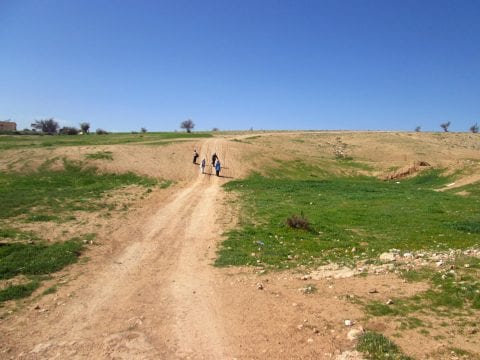
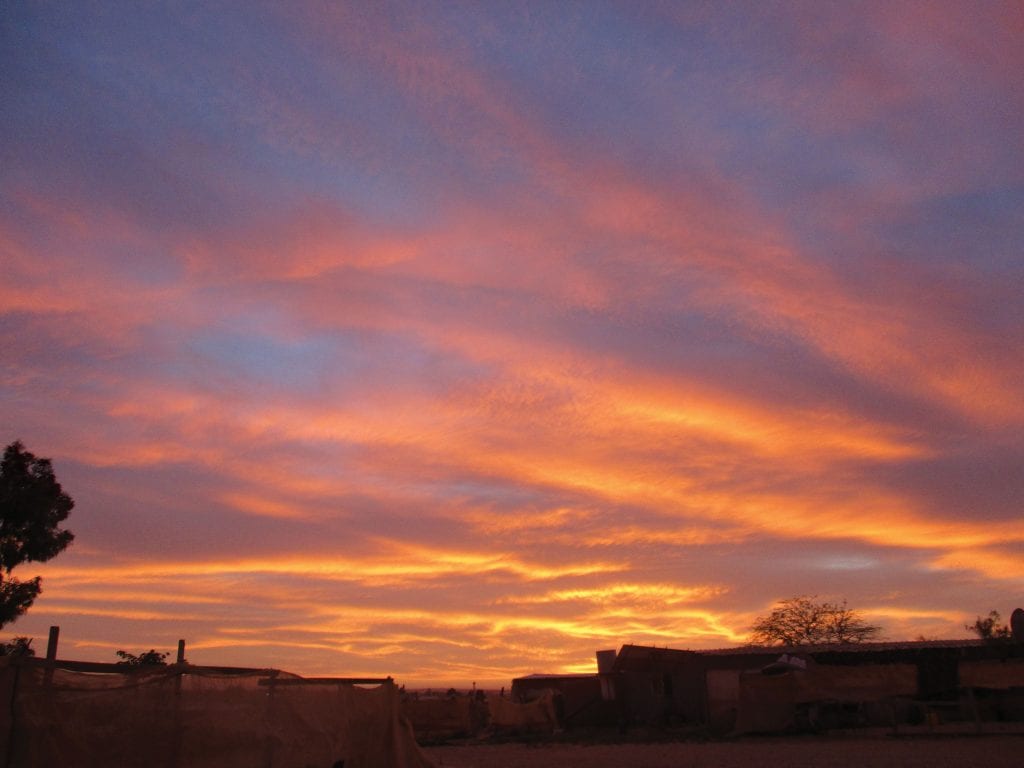
Khadeeja, Bīr Haddāj
I am 16 years old, and have been involved in the photography project for the past two years. I love my village because it is small and not like the crowded city. I very much wish that I hadn’t discontinued my studying.
Bīr Haddāj
Bīr Haddāj is a Bedouin village located west of Route 40, close to Kibbutz Revivim. Residents of the village are members of the Al-Azazmeh tribe, who were relocated by the military regime to the area near Neot Hovav, but in the 1990s decided to return to the area adjacent to their historical home. Today, Bīr Haddāj is home to around 6,000 people. In 1999 the Israeli government decided to recognize the village, and today it is one of the villages in the Neve Midbar Regional Council. The village’s name comes from the name of an ancient water-well in the original village (close to the village’s current location) called Be’er Chayil, or in Arabic, Bīr Haddāj. Majority of its residents make their living from farming and herding of sheep and camels.
Services and Infrastructure Within the recognized village of Bīr Haddāj there are two elementary schools, one high school, four mandatory kindergartens, one preschool, and in 2019 the first daycare center was opened. There is a clinic and a mother-and-child health station which supply medical services to its inhabitants.
Despite the fact that the village was recognized by the State of Israel in 1999, the village’s houses were never connected to the national electricity grid, and its residents must make do with solar panels. The homes in the village are not connected to the national water system and villagers acquire their water from ‘Memi HaNegev’ water supplier. However, they are forced to lay-down their own infrastructure and at their own cost. The houses in the village are not connected to the waste removal system. Garbage removal services do not operate in Bīr Haddāj, except for within the school property. Excluding the one paved road leading to the school, all of the other roads in the village are unpaved.
Although residents of the village do not receive municipal services, they have begun to receive demand for the payment of municipal taxes (Arnona in Hebrew), which have accumulated to tens of thousands of Shekels in recent years.
In 2017, the Authority for the Development and Settlement of the Bedouin in the Negev (otherwise known as the Bedouin Authority) declared that its “regulatory efforts” in the village had failed, calling for increased enforcement and demolition of houses in the village. Bīr Haddāj is subject to the house demolition policy, and there are demolition orders pending over some of its houses. In addition, many villagers are left outside of the blue line.
Residents are eager and interested in further planning for the village as an agricultural locality, so that they can continue to maintain their traditional way of life on their historic lands.
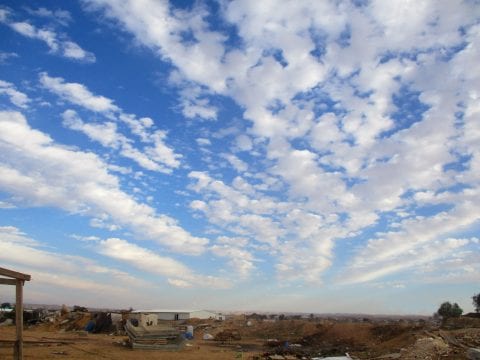
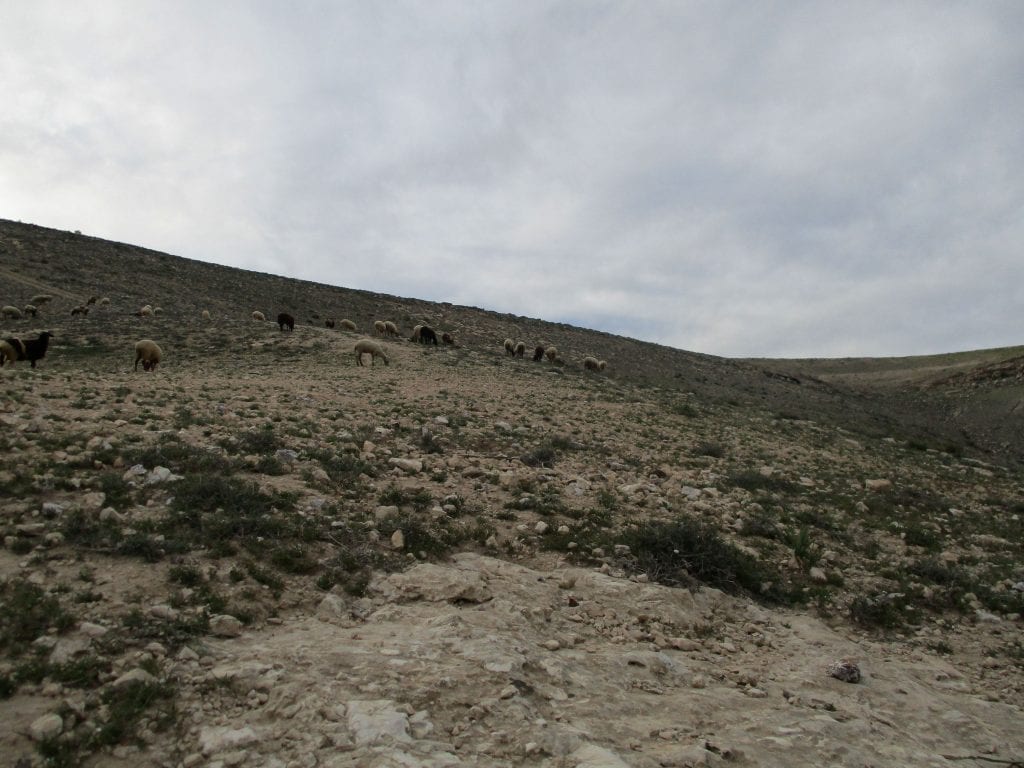
Umm Yusef from the Naqab
I live in the village of Tel Arad. I got married a year ago. When I married and moved to Tel Arad I did not feel the change because the situation in my village is similar to that of Tel Arad. I hope, as a woman, that we will have suitable job opportunities for women, especially women who did not study and did not have the opportunity to study. I also hope that we are given the opportunity to learn, that the situation of women will change for the better in all respects, and that I will play an effective role in society.
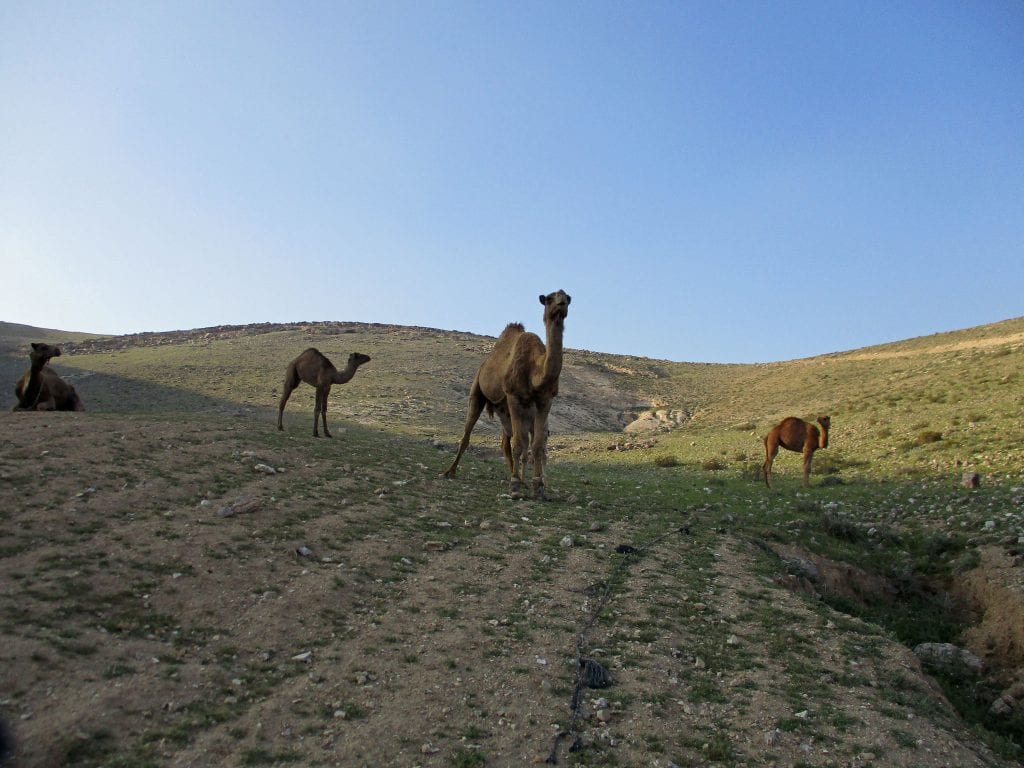
A photographer from Tal ʿArād
I was born in the village and my childhood was here. I remember that my childhood was beautiful and simple. I went to school until the eighth grade. What do I require the State to do? That the State will provide all the needs and services in my village, and also recognize the village. Today, in 2019, and we still do not have the basic rights and means to live in dignity. Photography is the means by which we show people life in the village in the absence of services and rights. My dream is that I will reach the goal I set for myself and that I will receive permission to work in my own private kindergarten.
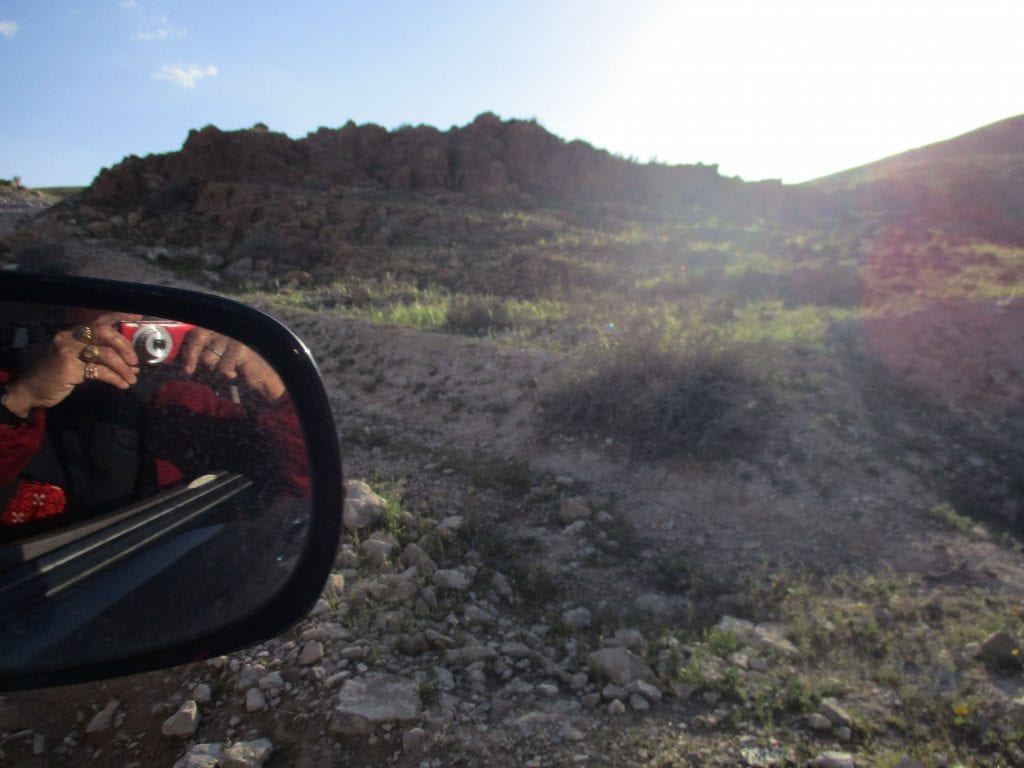
A photographer from Tal ʿArād
I am the mother of four sons and nine daughters. Our childhood was simple and beautiful. I would take the sheep to pasture. I remember when I was a child, I didn’t have toys and we used to make them ourselves. We made all kinds of animals from mud. It was a beautiful childhood, not like today. I hope I live my entire life in Tel Arad, because life in the towns is unsuitable for us in all respects. oday we have no respectable role, we all work in agriculture and we have no money to live in a town and buy land. Life in town is expensive. My dream is to continue living in my village, that we will receive all our rights, and also that we will have all the services in the village. Photography has given me the ability to record all moments whenever I want, for memory’s sake.
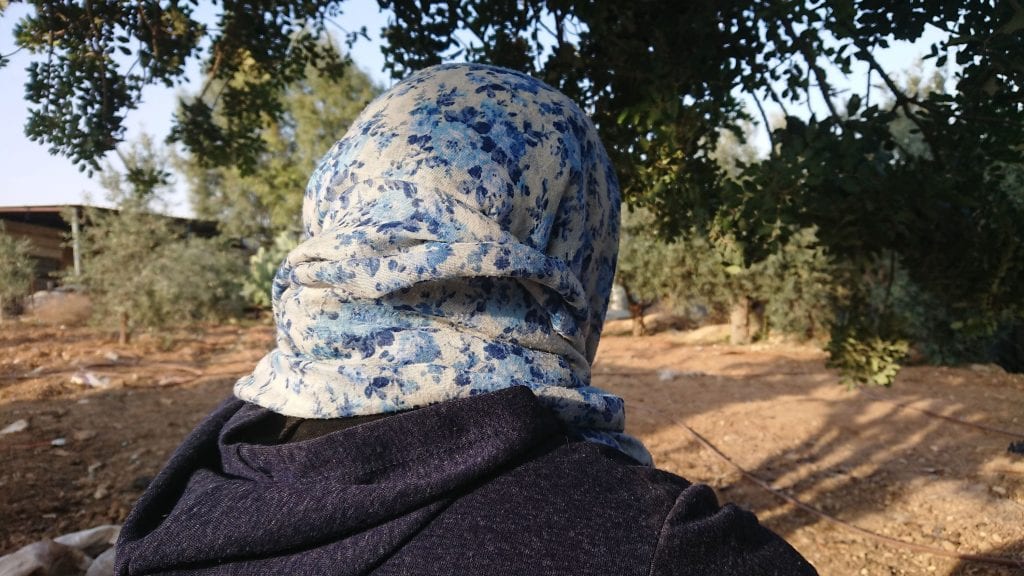
Maryam an-Naṣāṣrah, Tal ʿArād
My name is Maryam al-Nasasra. I am 47 years old and live in Tal ‘Arād, married for 30 years and have one daughter. I have my own project, producing cheese from my sheeps’ milk. I have a garden in which I grow different vegetables, so that I don’t need to buy them in the store. I participate in the photography project so that everyone will be able to see our suffering and the lack of services in the unrecognized village where we live.
Portrait photo by Tanya Aizikovich
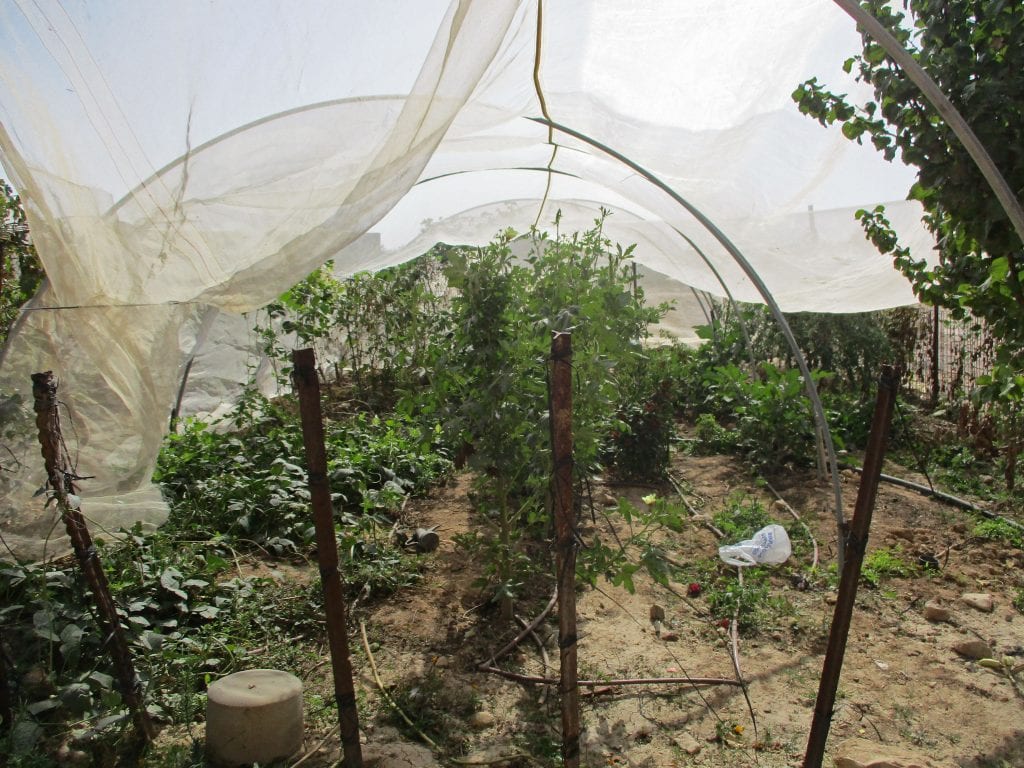
A photographer from Tal ʿArād
I was born in the village of al-Jurf and moved to Tal ‘Arad when I married 10 years ago. Before I started participating in the photography project I took pictures with my cellphone. I like taking pictures of my friends and family. I began participating in the project one year ago. When I started photographing with the camera, which has a higher quality and is better than my phone, I began to have a deeper understanding of photography, that there is significance in every photograph. I learned that I must act with patience and serenity while photographing. I continue to take pictures because every day I learn something new. I hope to have a big camera one day and that the photography project will continue.
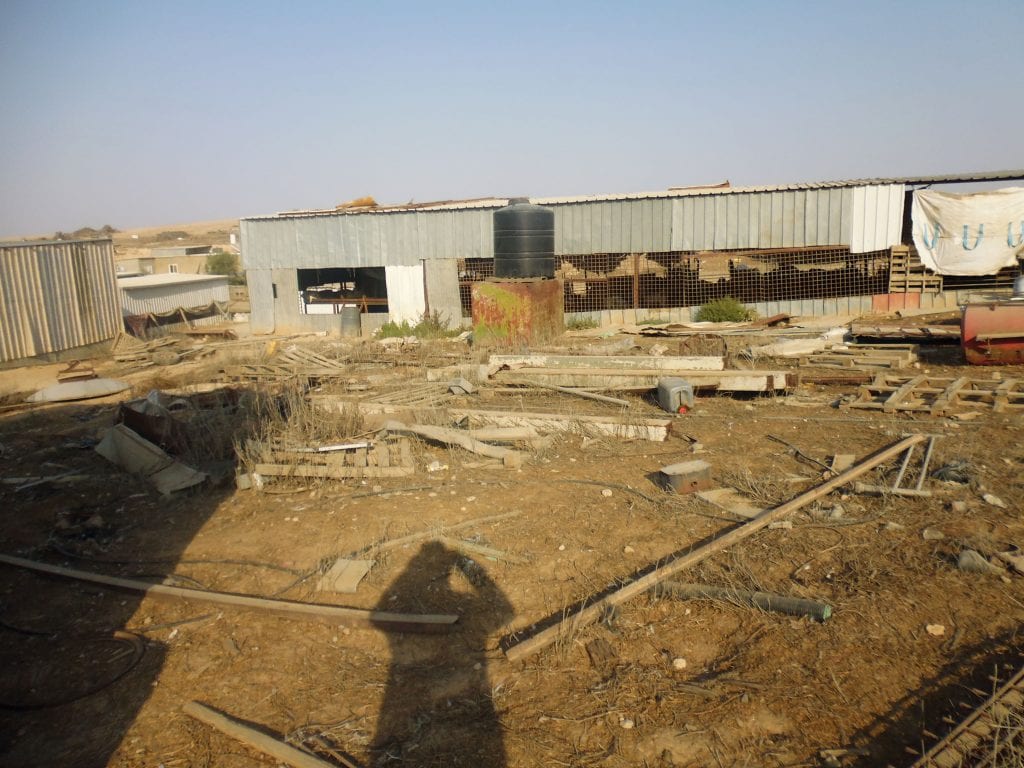
A photographer from Tal ʿArād
I have been participating in this project in order to show the world the conditions that we’re living in, how we suffer from lack of water, lack of electricity, lack of public transportations, and lack of ability to build and develop our village and of course also from constant demolitions.
Tal ʿArād
The unrecognized village Tal ʿArād is located north-west of the Jewish town Arad, with a population of 1,700. The original residents of the area were the Jahalin tribe who were transferred by the State of Israel in 1951 from the Negev/Naqab area, and currently reside in the area of Mishor Adumim. Following the establishment of Israel, State authorities transferred from other areas of the Negev/Naqab (mainly from the area of al-Lagiyyih) internally displaced Bedouin families. The village is named after the nearby archaeological site, Tel Arad.
Services and Infrastructure The village is not connected to the national electricity grid, and its residents use solar panels and generators in order to produce power. In 2018, after countless requests to the Water Commission, some residents received approval to connect to a ‘Mekorot’ connection point, from which they drew water. Today, some residents pay ‘Memi HaNegev’ water supplier for the basic provision of water. Except for the road leading to the nearby military base, there are no paved roads in the village.
There is one integrated elementary and middle school in the village. However, high school students are forced to travel to the nearby township of Ksīfih, 10 km from the village (a 20 minutes drive). The village does not have any healthcare facilities and the people must travel to Ksīfih or Arad for medical attention.
The village has an active parent committee that fights to improve the poor conditions in the school. In September 2019, after a lengthy dispute between the Ministry of Education and the Al-Qassum Regional Council, the parents committee had to connect the school to water on their own expense. There is also an active women cooperative in the village that is working to promote women’s employment and the provision of other basic services such as public transportation and a clinic. They also have a modest tourism venture. The parents committee and the women cooperative work in cooperation with the “Good Neighbor” group from the nearby Jewish city of Arad.
Threats The village of Tal ʿArād is an unrecognized village and is therefore subject to the policy of house demolition and crop destruction by the authorities. According to the Be’er Sheva Metropolitan Plan, the village is partly on an area defined as a desert landscape and partly on a mining and quarrying area – a definition that denies recognition of the village. The residents, for their part, want to stay in Tal ʿArād, and request that the government recognize the village where it is today. An ultra-Orthodox city called Kasif is planned to be built near the village. There are plans for four other community settlements for the Jewish population to be built in the Arad foothills area.
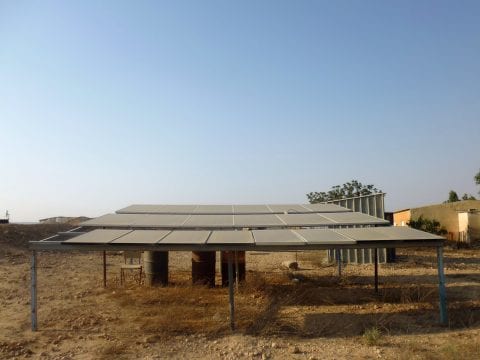
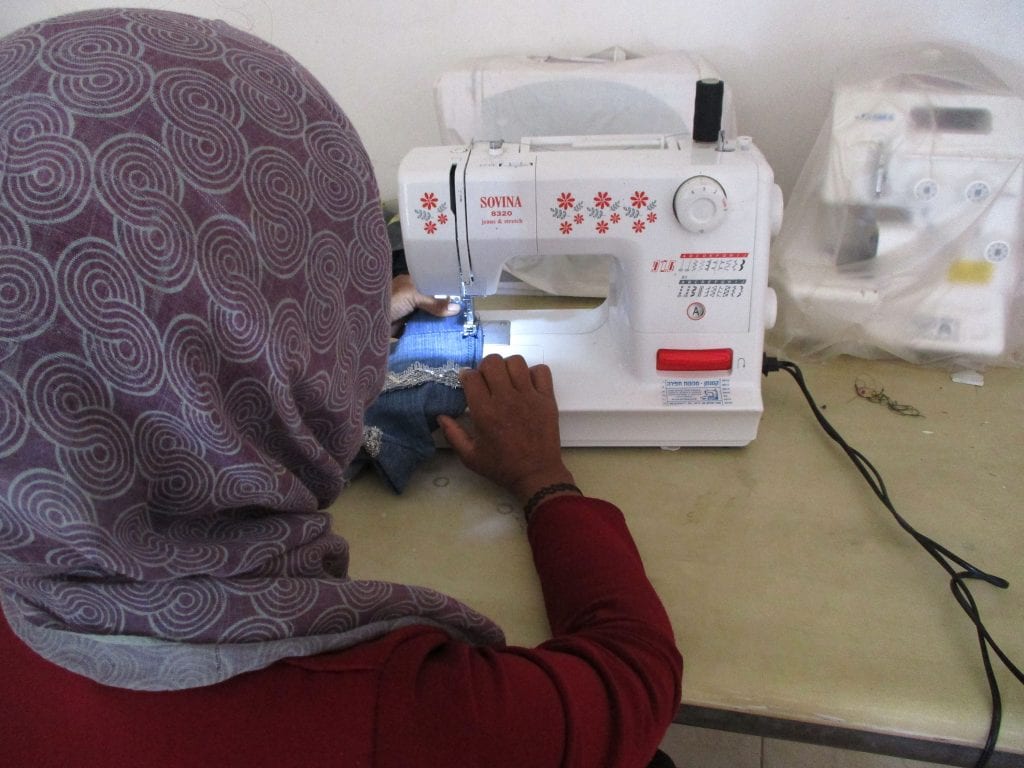
Jmīʿih, Rakhamah
My name is Jmieh and I am from the unrecognized village of Rahma. I joined the photography project in order to document my life and the daily life of the village such as home demolitions and violations of our rights. I am home all the time because I don’t have a job and therefore decided to join the photography project and document our daily life.
Portrait photo by Nūra from Rakhamah
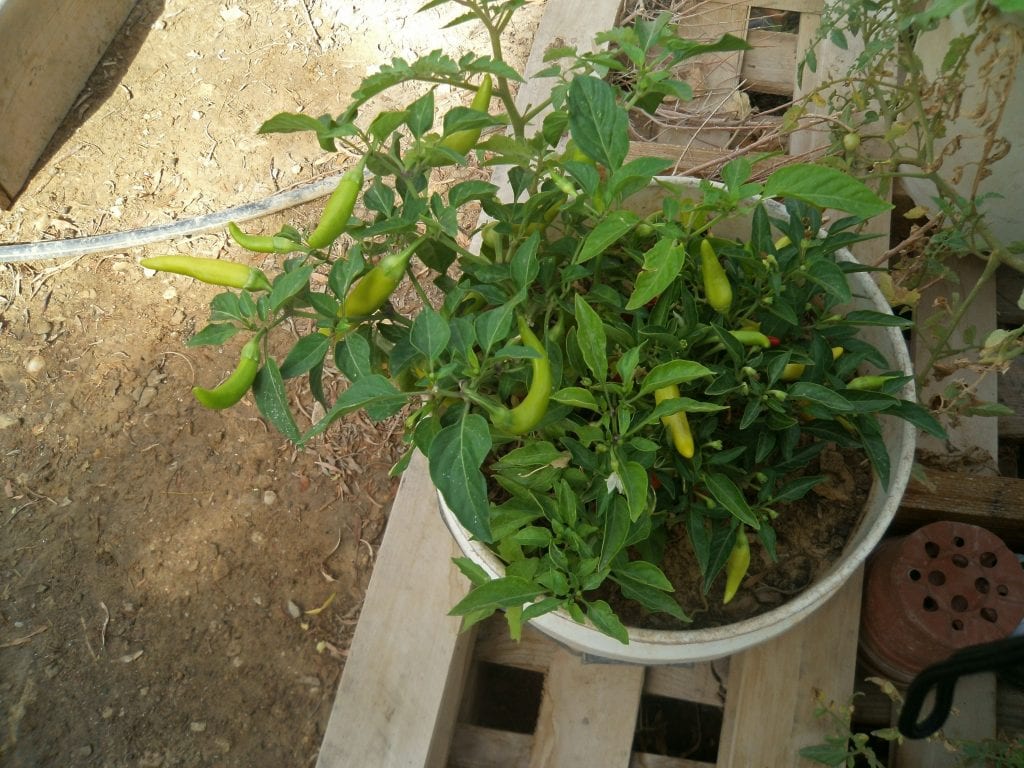
Nūra, Rakhamah
I have lived in Rakhamah since the day I was born and I feel connected to this place with all of my heart. Our village doesn’t have public transportation and I suffer to get to the university. Also, we are not connected to the electricity and we constantly have problems, especially during winter, most of the time we are left without electricity. One of the events that was painful for me to photograph, was when they demolished the home of our neighbor. She lived in a tent, collecting iron and selling it to support herself. The State thought that even a tent is too much for her. Before joining the project, police forces demolished my aunt’s house. They uprooted her olive tree, broke her solar panels, heaped it all to a pile of dirt and attacked her with tear gas. One of the officers said “You will see, I will uproot you from here”. I wish I’d been participating in the project then so I could have documented it all.
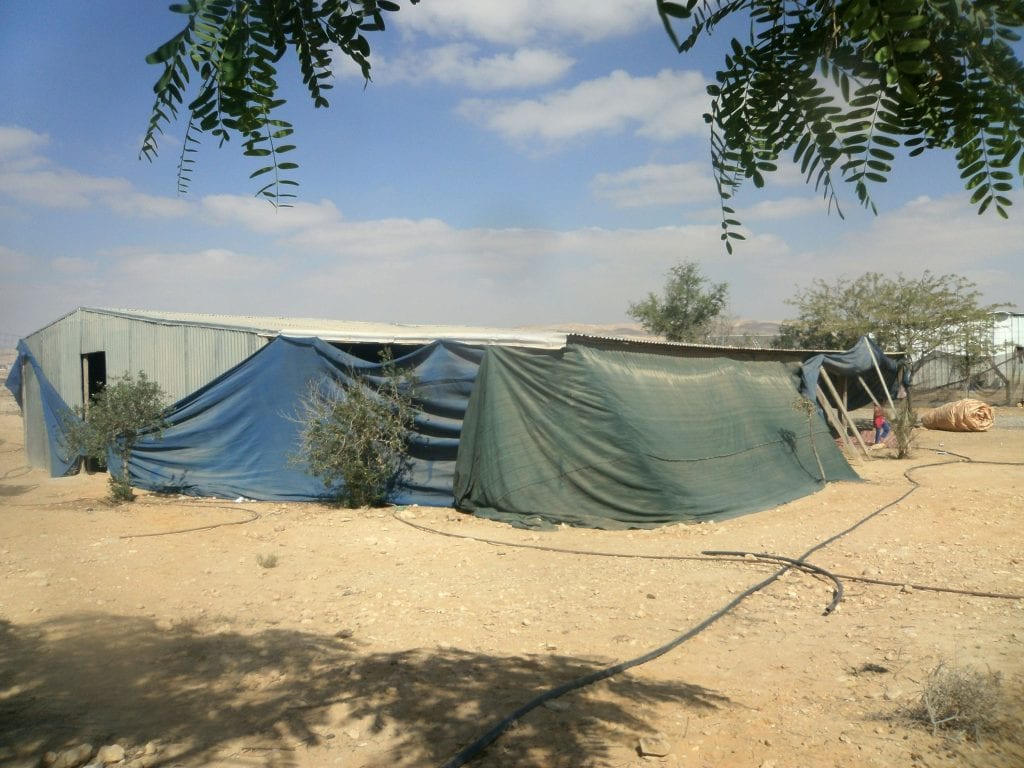
A photographer from Rakhamah
I love to take pictures of nature. The pictures I took were not difficult, but it was important for me to take those pictures. The most difficult thing to document are demolitions, sometimes I’m afraid that they will take the camera. Photography gave me strength, proved my existence and my point of view. I dream that I will have a suitable profession to work in.
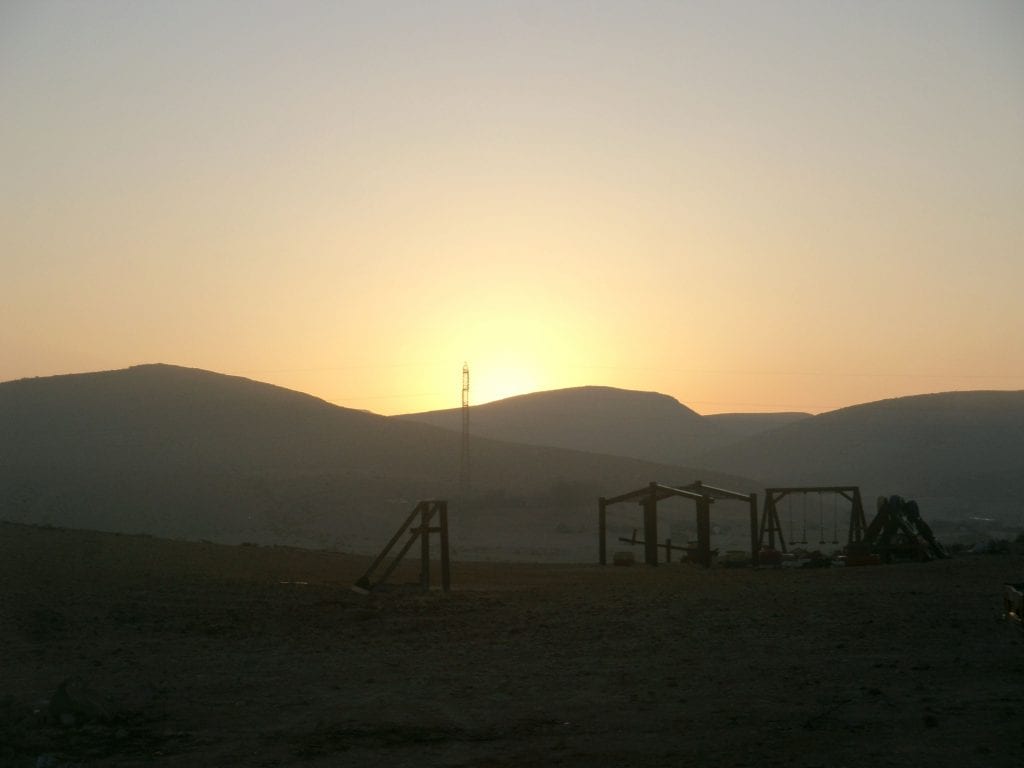
Salīmah, Rakhamah
I take pictures in order to document the daily life and the events that take place in the village. Police forces plowed a field that was already planted. They demolished my aunt’s house and I took photos from a distance. I put the camera on a tree because I was afraid they would take it. It’s difficult to photograph in the village because people do not accept the idea. Nor can you photograph a place where there are women because it is unacceptable here. Photography enables me to document our life here. I wish I would have pictures from the past, of my mother and father and my grandparents and how they lived, as well as pictures of the village in the sixties, before it was filled with waste. When I received the photographer’s card from the project I felt a happiness that can’t be described, and I felt the importance of the project and that we do not do things in vain.
Rakhamah
The village of Rakhamah is located 2 km north-east of the town of Yeruham, along both sides of route 204. 1500 people live in the village. Part of the population lives in this place for generations while the other part are internally displaced who were transferred in 1956 by the government to this location from the Ovdat area. The village is named after a water well that is located nearby.
Infrastructure and Services No education and health services are available in the village. The children attend school in Wādi an-Naʿam, a 35 km distance with 40 minute drive from the village and in Gaṣir as-Sirr, a 15 km distance with 15 minute drive. For medical care, the residents go to Yeruham, 4 km distance from the village.
Water is obtained from a connection to the main pipe line on the Yeruham-Dimona road and the connection is done privately by the residents. Some residents bring water by water tanks. Rakhamah is not connected to the national electricity grid and the residents use solar panels and generators in order to produce electricity. Some families in the village have no electricity at all. There are no paved roads in the village, no sewage system and no garbage disposal.
Threats Rakhamah is a Bedouin village that is partly under the jurisdiction of the regional council Ramat Negev and partly under the jurisdiction of Yeruham. The residents of Rakhamah wish to be recognized as an independent agricultural neighborhood that will be part of Yeruham, or as an independent agricultural village. The present situation of an unrecognized village puts Rakhamah under the constant threat of house demolitions, that occur every couple of months in the village.
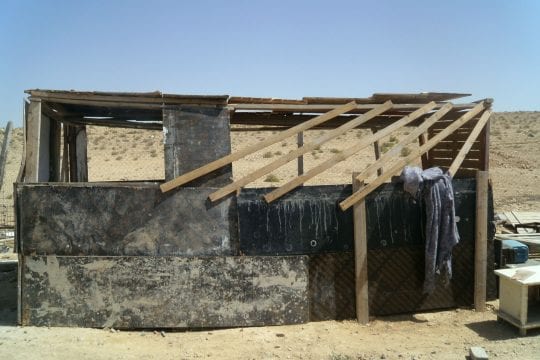
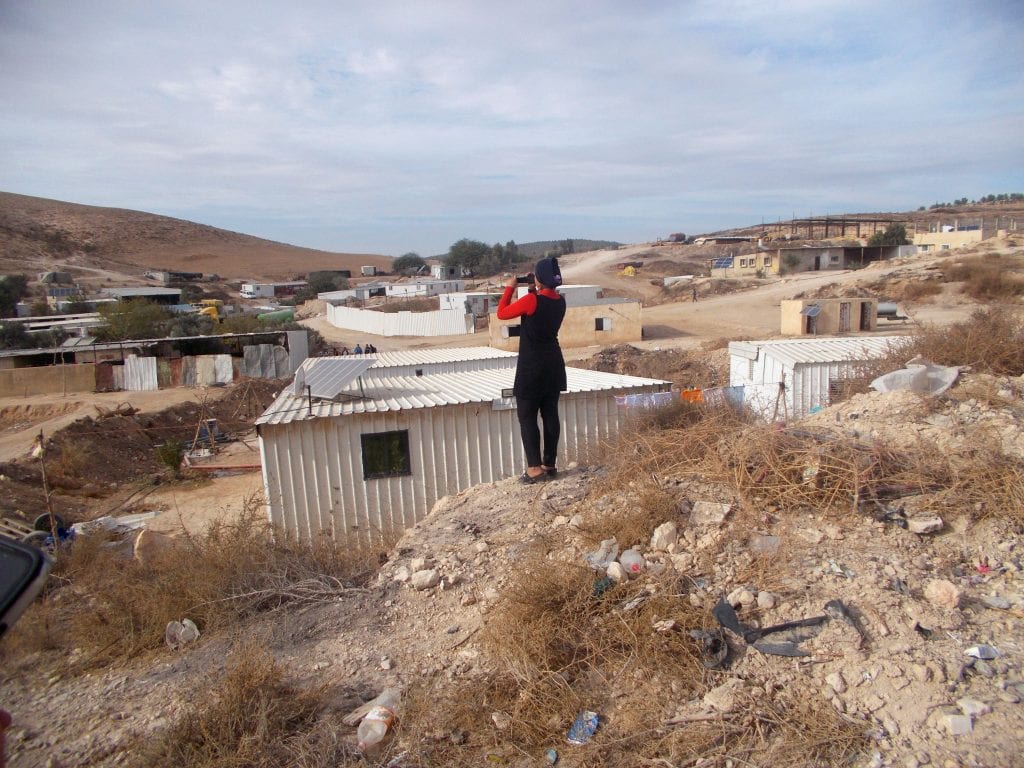
ʾAḥlām ʾAbū al-Qiʿān, ʿAtīr
I like best to take photographs of our village, what it looks like, how quiet it is. We love our village very much and hold onto it steadfastly. Photography taught me a lot of things and I became a photographer in order to show people how we live. The event I documented and which I will never forget, was when the police came to my brother’s house, and despite my emotional difficulties, I took pictures. In my opinion, the most difficult thing to photograph is the demolition of our houses, how could I photograph the demolition of my own home? In the past I did not have the courage to dream about anything, but now that I have a camera I can dream and try to achieve my dream. I want to be a wedding photographer.
Portrait photo by Hudā ʾAbū al-Qiʿān
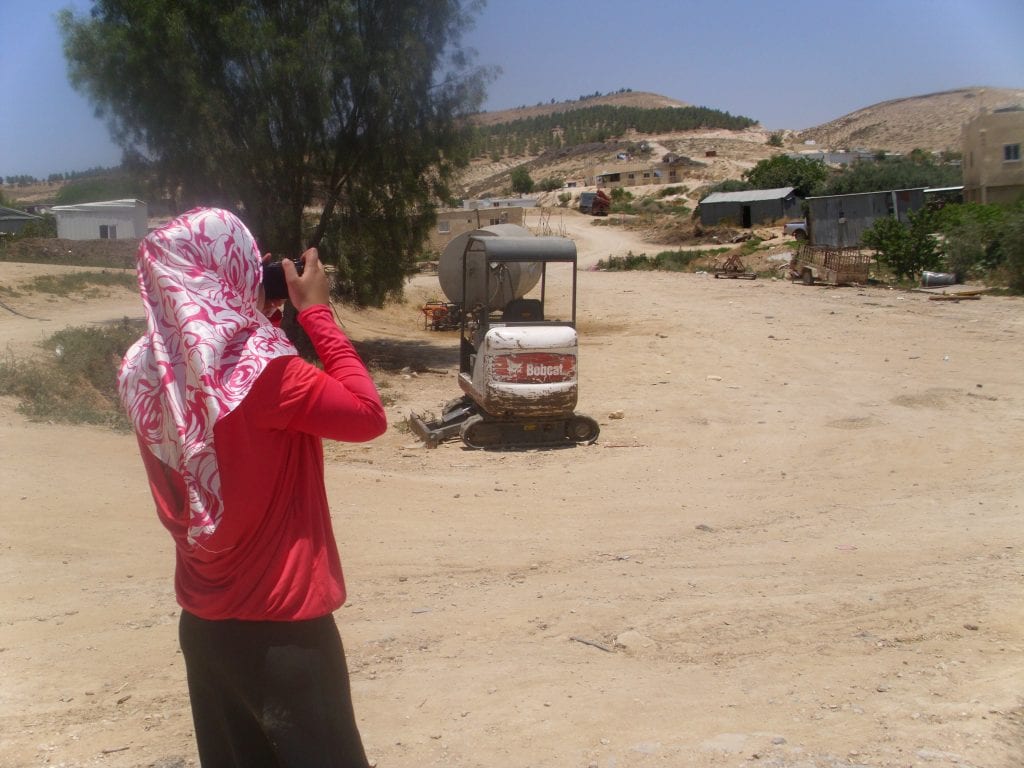
ʾAmal ʾAbū al-Qiʿān, ʿAtīr
I take photographs of the reality of our lives and how we live in the village. I like to photograph the things that I want to keep as memories. A person needs courage to photograph house demolitions because I find it terrible, the demolitions are simply horrible for me. Sometimes the thing I want to photograph are too far for me to reach. From my experience in the project I learned that we must show people the reality and the difficult situation we live in. We do not have schools in the village, no water or power network and no health clinic. I really like to read books and my dream is to be a writer.
Portrait photo by Yusra Abu Kaf
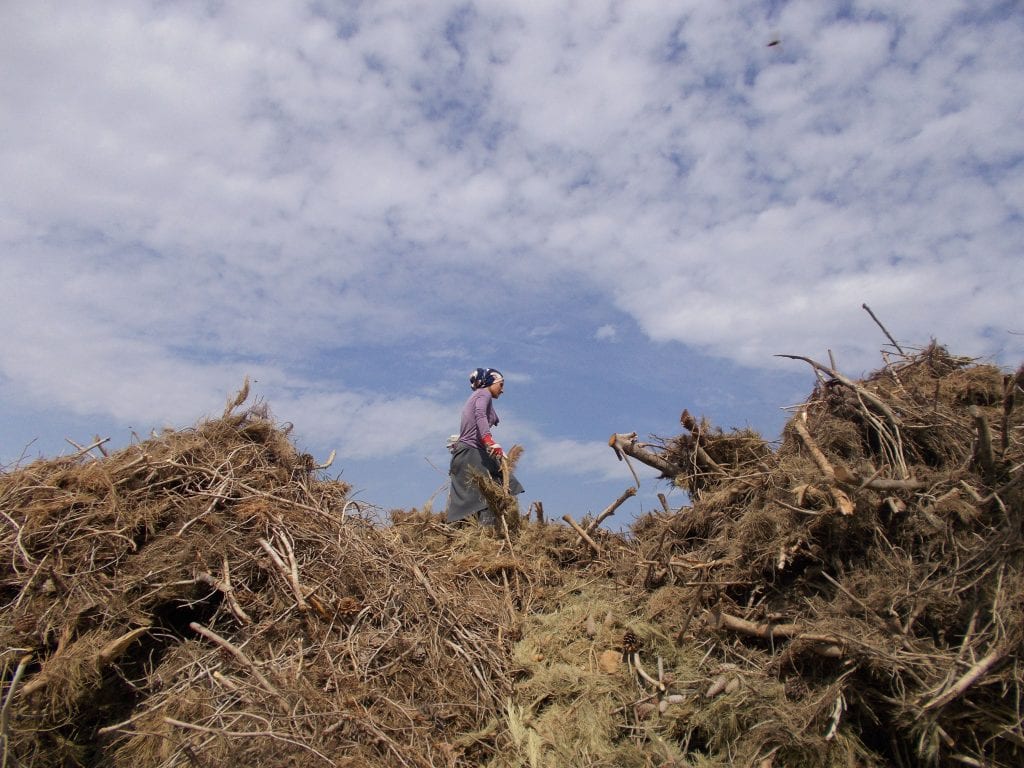
Hudā ʾAbū al-Qiʿān, ʿAtīr
I am 28 and a mother of two children. I participated in the photography project because it is my hobby, I love photographing public places and taking pictures of winter’s atmosphere. I love my life in the village and the safety it provides. I watch a lot of action movies and love to cook. My dream is to become a hip hop dancer.
Portrait photo by ʾAḥlām ʾAbū al-Qiʿān
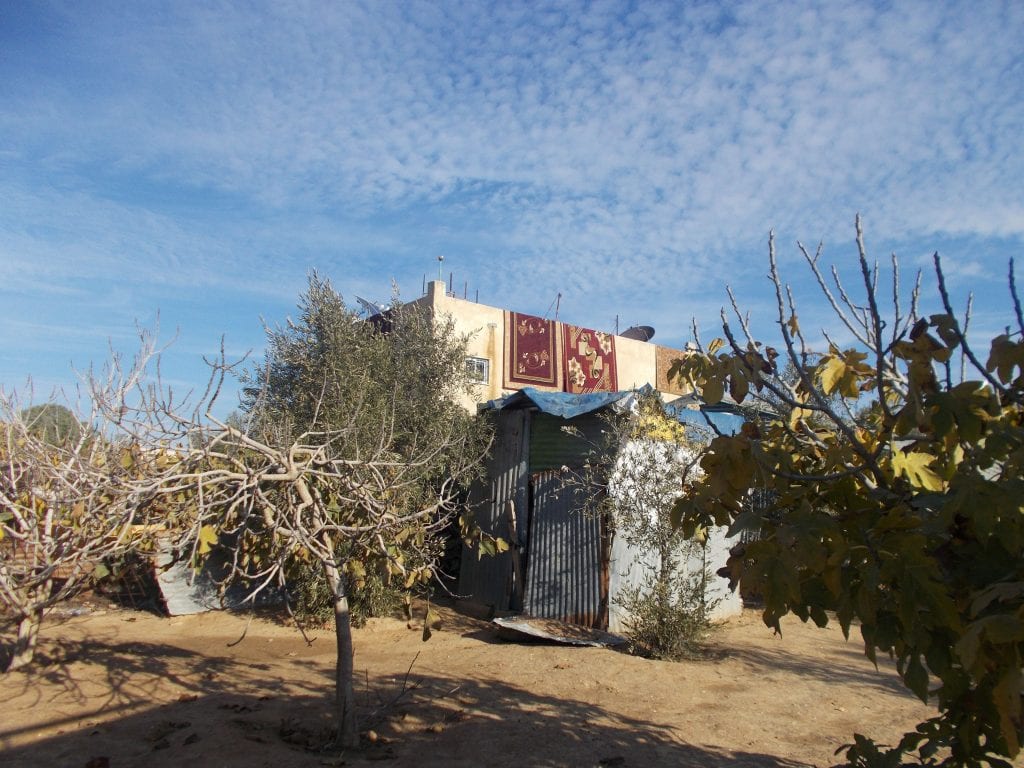
Hadil, ʿAtīr
I am 30 years old and the mother of three children. I am a housewife, love cooking and enjoy photography because it reflects what is inside me. I love social life and meeting new people and love to wander around, outside the village. I dream of being a famous chef.
ʿAtīr
The unrecognized Bedouin village of ʿAtīr is located north-east of the township of Ḥūrah. There are currently around 700 people living in the village. The name of the village derives from the name of the area in Arabic – ʿAtīr. The ruins of ʿAtīr are located two km from the village. The villagers are internally displaced people, who had been transferred in the past from Wādi Zubalahe (near kibbutz Shuval). After the establishment of the State of Israel in 1948, all of the Bedouin people who lived west to Route 264 were transferred to the east side of the road. However, in 1956, the residents of ʿAtīr were transferred once again to their present location.
Services and Infrastructure
There are no health or education services in the village. The children attend school in the township of Ḥūrah, 9 km distance and a 15 minute drive from the village. In order to receive medical attention or healthcare, residents must also drive to Ḥūrah.
The village of ʿAtīr is not connected to the national water grid and villages must connect a water pipe to the connection point in the Yatir Forest, two km away, from which the residents installed the infrastructure themselves at a cost of nearly ILS 200,000. The cost of water is high and stands at about ILS 15 per cubic meter. The village is not connected to the national electricity grid and its residents use solar panels to generate power. There are no paved roads in the village, and the main road to and from Ḥūrah (316), which previously had to be maintained by the villagers themselves, was renovated by the authorities only a year ago.
Threats
ʿAtīr is an unrecognized village and for this reason is under eviction threat. In 2004, the entire village received eviction notices. In July 2010, the Committee on Principal Planning Issues decided to recommend that the Government of Israel recognize the village of ʿAtīr. However, an intervention by a representative of the Government led the Committee to withdraw from its decision. In May 2015, following a long legal battle against the eviction of the village, the Supreme Court ruled that the people can be forcefully moved to the township of Ḥūrah. All of the homes in the village have demolition orders. The State of Israel is looking to relocate the villagers to the township of Ḥūrah, but the villagers are asking, on the grounds that they have already been displaced twice before, that ʿAtīr will be recognized where it is located today as an independent agricultural village.
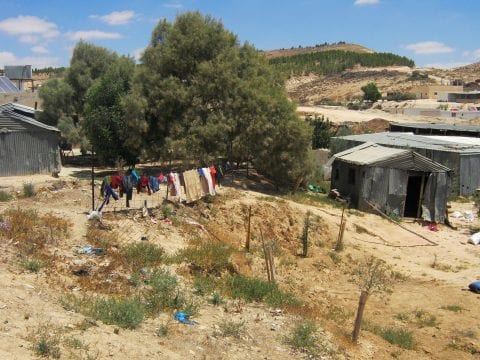
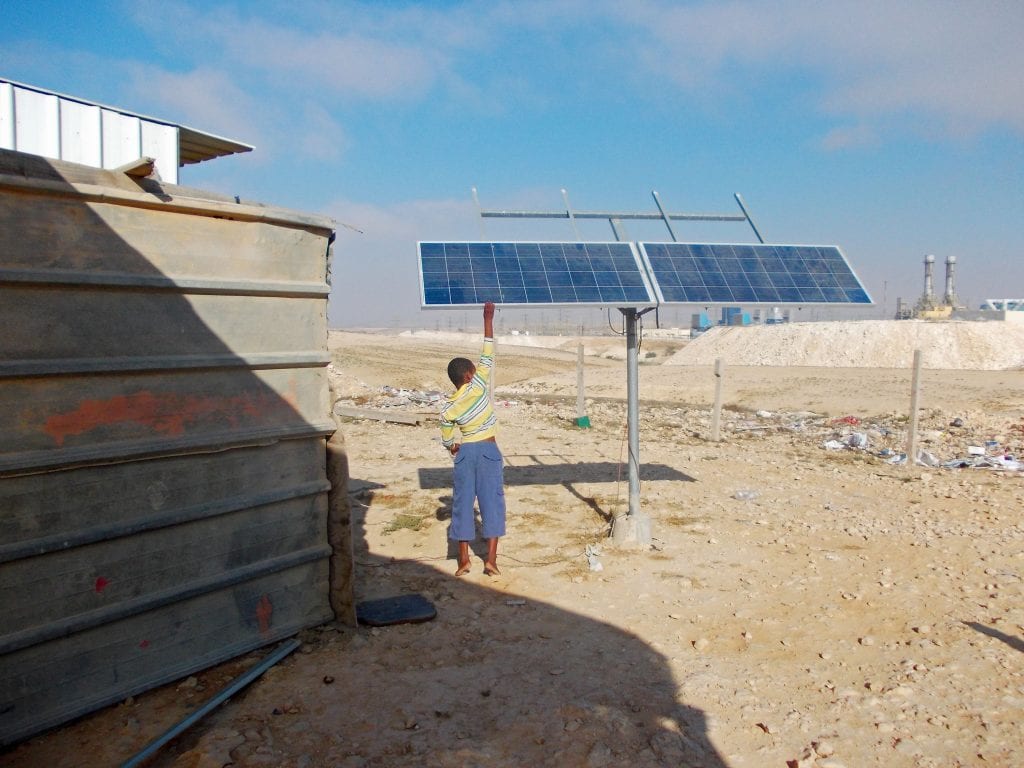
A photographer from Wādi an-Naʿam
I’m a woman from Wādi an-Naʿam, a village that the State of Israel refuses to recognize. Four years ago I joined the photography project together with other women from the village. Because we live in an unrecognized village, we are constantly exposed to threats of house demolitions. I used the camera to document the process and the moments of demolitions in the village. The photos in this exhibition present our way of life in a State that claims to be a democracy. From the photos you can see that we live without the most basic things like electricity, infrastructures and other services. Thanks God and also thanks to this project that helped us raise our confidence and highlight the issue of the unrecognized villages so that this would become a matter for all and by that initiate the finding of an adequate solution.
Wādi an-Naʿam
Wādi an-Naʿam is the largest unrecognized village in Israel, located 4 km. south of the city of Be’er Sheva, alongside route 40, with about 13,000 inhabitants. The village is home to more than 20 different families that belong to the Al-Azazmeh tribe -most of whom are internally displaced, having been removed from the area of the western Negev and the rest lived in the area prior to 1948. The village was established in the early 1950s. Majority of the inhabitants do not have ownership claims to the land in the village. In 1974 the construction of the industrial area ‘Ramat Hovav’ began near the village – a large chemical industry zone, also used as a toxic waste disposal site. The village derives its name from the plane area where it is located, which is also called Wādi an-Naʿam. In the 90s, a power plant was established among the village’s houses, which has even been expanded in recent years.
Services and infrastructure The village has a clinic and a center for family health, which were opened following an appeal to the Supreme Court. But since these facilities are located at the margins of the village, most of the inhabitants travel to the township of Šgīb as-Salām, about 15 km from the village, to obtain treatment. There are two elementary schools in the village, all integrated with the intermediate school system, and two kindergarten clusters, all located in the center of the village. There is another elementary school situated at the margins of the village. These educational institutions serve about 3,000 children, most of whom travel great distances on unpaved roads. Because the shuttles to and from the schools are unregulated, arrival and departure from the school becomes dangerous and unsafe, and have even caused the death of several children in the past. High school students are studying in the town of Šgīb as-Salām. On the eve of the 2013 school year (September), the Ministry of Education announced the closure of village schools, but they remained open as the local parent committee fought an ongoing battle with the Ministry of Education to immediately improve conditions in existing institutions that suffer from overcrowding, lack of cleanliness and rickety infrastructure that pose a danger to children’s well-being. The parent committee also filed a number of applications for the establishment of a high school, but the State agreed only on the condition that the villagers move to the southern neighborhood of Šgīb as-Salām.
The village has several connecting points to the main water pipe along road 40, from where the inhabitants themselves draw their pipes. They acquire their water from Mekorot (Israel’s national water company) at the high price of LIS 8.6 per cubic meter. Since the water pressure is low, those residing farther from the road are forced to carry water with tanks, at a much higher rate and of poor quality. The village is not connected to the national electricity grid and uses mostly solar panels for obtaining power. Above the village there are several power-lines. The schools are also disconnected from the electric grid as, and are operated by generators. There are no paved roads in the village. Following a prolonged battle initiated by the school parents’ committee, a traffic light was constructed on road 40 to allow school buses to move safely in and out of the village.
Threats Wādi an-Naʿam is an unrecognized village located within the security zone surrounding the industrial area of Ramat Hovav. The most imminent threat to the village is the expansion of the special security industry zone of Ramat Beka. At the back of the village is an experimental area of IMI, a company that specializes in the development and manufacture of firearms that cause much noise and damage to the village houses and schools as a result of the explosion generated by the blasts. Today, the plan is to move the IMI Experimental Area from Ramat Hasharon (which was privatized and owned by Elbit Company) to the Ramat Beka industrial area, thereby expanding it to endanger tens of thousands of residents. Beyond the health dangers, expanding the industrial area will result in severe building and development restrictions on about 1,000 residences in 5 additional villages, which will result in displacement of families from the area. Adalah and Bimkom associations filed their objections to the plan, which were rejected by planning authorities in Israel. The expected result is the evacuation of the said families, in addition to exceptional exposure to hazardous substances. Moreover, the village is within the health safety radius set around the Ramat Hovav industrial area, and defined as an uninhabitable zone.
While attempts were made to reach agreement between the residents and the authorities to transfer the village as one organic unit to another place, they all failed. During the time in which the issue was brought to the Supreme Court of justice, the Government of Israel approved the establishment of a new urban settlement for the villagers south of Šgīb as-Salām in 2016. The village’s inhabitants are opposed to this solution, as it is a crowded urban settlement that will not allow them to continue living their agricultural way of life. They claim that due to the factories’ treatment of nuisances and pollutants, the safety radius of Ramat Hovav can be reduced and the village can be recognized where it is today as an agricultural village.
The village of Wādi an-Naʿam is subjected to a policy of home demolitions and the destruction of crops.
